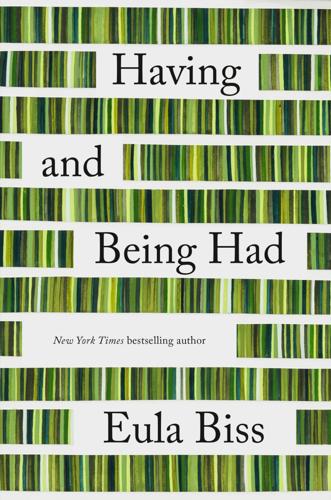
Having and Being Had
by
Eula Biss
Published 15 Jan 2020
Woolf and the Servants, Alison Light. Bloomsbury, 2008. End Slavery Now, www.endslaverynow.org. JOAN DIDION “The Autumn of Joan Didion,” Caitlin Flanagan. The Atlantic, January/February 2012. “The White Album,” Joan Didion. The White Album. Farrar, Straus and Giroux, 1990. First published 1979. “Slouching Towards Bethlehem,” Joan Didion. Slouching Towards Bethlehem. Farrar, Straus and Giroux, 1990. First published 1961. “Out of Bethlehem: The Radicalization of Joan Didion,” Louis Menand. The New Yorker, August 17, 2015. Menand notes, “Most of the people who walked around the Village looking like Beats in 1960, like most of the people who walked around San Francisco or Berkeley or Cambridge looking like hippies in 1967, were weekend dropouts.
…
I rarely see her and we talk only by text. She comes while I’m at work and takes the $160 I’ve left for her. When I return home, I find the things she recovered from behind the couch and under the bed—a creased book, a wine cork, the bathtub from Monopoly. These are laid out on the table like a museum exhibit. JOAN DIDION I think I see Joan Didion, improbably, behind the wheel of a minivan. She passes me on my bicycle and I catch a glimpse of her from behind. This has happened before. I’ve seen her waiting in line at the pharmacy, her face turned away, and then she’s gone. I once had a terrible argument about Didion with my mother.
…
Slumming Commercial Understanding The Right White Not Consumers Living Things Consumers Husbandry The Neighborhood Get Off My Lawn Thanksgiving Capitalism Comforter Affluence Moral Monday The Landlord’s Game Capitalism Pokémon The Piano Art Work Anything Passing Membership Art Poor Rich Work Leisure The Protestant Ethic Work Capitalism Liberation Collection Work Drag The Witch Mother’s Helper Joan Didion Tea Mine Work Art Mastered Work Service Satisfaction Toil Work Play Art The Game Investment Work Bartleby Investment Welcome to the Jungle Maintenance Sin Stocks Integrity Spy vs. Spy Apocalypse Now Great America Capitalism Titanic Repeat Art One’s Own Guggenheim Capitalism Accounting Art Eat a Peach Accounting Capitalism White Russians Spies Citizens Water Art Blood Bicycle Manifesto The Hug Resignation Work All I Wanted Care Ancient Mew The Gift Consumption The Hole Notes Works People About the Author I am afraid to own a Body – I am afraid to own a Soul – Profound – precarious Property – Possession, not optional – —EMILY DICKINSON If we really want to understand the moral grounds of economic life and, by extension, human life, it seems to me that we must start instead with the very small things.
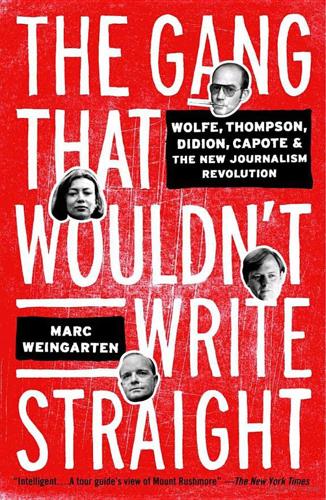
The Gang That Wouldn't Write Straight: Wolfe, Thompson, Didion, Capote, and the New Journalism Revolution
by
Marc Weingarten
Published 12 Dec 2006
Wolfe would revert to a“controlled trance”;“I felt like my heart”: Toby Thompson, “The Evolution of Dandy Tom,”Vanity Fair, October 1987 5. THE CENTER CANNOT HOLD Biographical background on Joan Didion is taken from Joan Didion, Where I Was From (New York: Random House, 2003) and Michiko Kakutani, “Joan Didion: Staking Out California,”New York Times, June 10, 1979. “I wrote stories from the time I was a little girl”: Linda Kuehl, “The Art of Fiction No. 71: Joan Didion,”Paris Review, Fall-Winter 1978. “Nothing was irrevocable … the shining and perishable dream itself”: Joan Didion, “Goodbye to All That,”Slouching Towards Bethlehem (New York: Farrar, Straus and Giroux, 1990), 229-30.
…
“paralyzed by the conviction that the world”: Kakutani, “Joan Didion: Staking Out California.” “Most of my sentences drift off, don’t end”: Kuehl, “The Art of Fiction.” “So they had come … to see Arthwell”: Joan Didion, “How Can I Tell Them There’s Nothing Left?”Saturday Evening Post, May 7, 1966. “adolescents drifted from city to torn city”: Didion, “Slouching Towards Bethlehem,”Slouching Towards Bethlehem, 84. “Debbie is buffing her fingernails”: Ibid., 92. “wearing a reefer coat”: Ibid., 127 “Every day I would go into [Allene Talmey]’s office”: Kuehl, “The Art of Fiction.” “Hathaway removed the cigar from his mouth”: Joan Didion, “John Wayne: A Love Song,”Slouching Towards Bethlehem, 34-35.
…
Witness Time’s and Newsweek’s clumsy mishandling of the hippie movement, or the embarrassing countercultural appropriations of broadcast journalism (Dan Rather reporting from Vietnam in a Nehru jacket, to name just one egregious example). Within a seven-year period, a group of writers emerged, seemingly out of nowhere—Tom Wolfe, Jimmy Breslin, Gay Talese, Hunter S. Thompson, Joan Didion, John Sack, Michael Herr—to impose some order on all of this American mayhem, each in his or her own distinctive manner (a few old hands, like Truman Capote and Norman Mailer, chipped in as well). They came to tell us stories about ourselves in ways that we couldn’t, stories about the way life was being lived in the sixties and seventies and what it all meant.
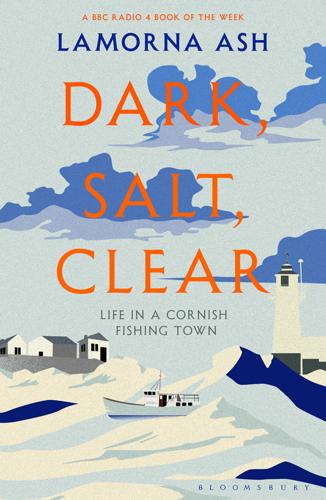
Dark, Salt, Clear: Life in a Cornish Fishing Town
by
Lamorna Ash
Published 1 Apr 2020
But then, while they were on holiday last Christmas, another earthquake ripped through their foundations, dismantling the life they had built together. At one point in Californian essayist Joan Didion’s The Year of Magical Thinking – the devastating meditation on the grief she experienced after the death of her first husband John and then her daughter Quintana – she considers the years she spent searching for meaning as a young woman. She often contemplated the episcopal litany, ‘as it was in the beginning, is now and ever shall be, world without end’. The young Joan Didion interpreted the phrase as ‘a literal description of the constant changing of the earth, the unending erosion of the shore and mountains, the inexorable shifting of the geological structures that could throw up mountains and islands and could just as reliably take them away’.
…
BLOOMSBURY PUBLISHING Bloomsbury Publishing Plc 50 Bedford Square, London, WC1B 3DP, UK BLOOMSBURY, BLOOMSBURY PUBLISHING and the Diana logo are trademarks of Bloomsbury Publishing Plc First published in Great Britain 2020 This edition published 2020 Copyright © Lamorna Ash, 2020 Lamorna Ash has asserted her right under the Copyright, Designs and Patents Act, 1988, to be identified as Author of this work Text from A Year of Magical Thinking by Joan Didion reprinted by permission of HarperCollins Publishers Ltd © 2005, Joan Didion Text from ‘The Collected Stories of Dylan Thomas’ by Dylan Thomas © 1954, Dylan Thomas. Reprinted by permission of New Directions Publishing Corp. Text from New Collected Poems of Marianne Moore by Marianne Moore, reprinted with permission of Faber and Faber Ltd.
…
After the cameras left, a silence hung over the area. People gathered at friends’ houses just to sit with each other. No one wanted to be alone, but no one could speak much either. ‘It was as if the whole bay had the life knocked out of it,’ David Barron remembers. There are several fragments of poetry that Joan Didion returned to after the deaths of her husband and daughter. One of these was from Gerard Manley Hopkins’s ‘Heaven-Haven’: And I have asked to be Where no storms come. Where the green swell is in the havens dumb, And out of the swing of the sea. When I first read these lines they sounded like a resignation.
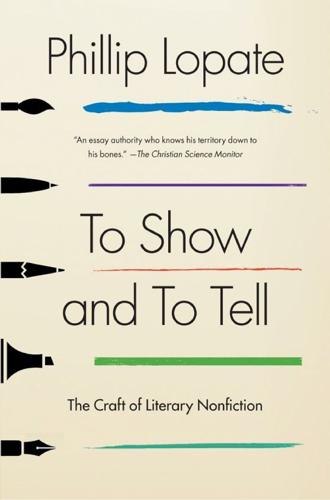
To Show and to Tell: The Craft of Literary Nonfiction
by
Phillip Lopate
Published 12 Feb 2013
George Orwell reflecting on his ambivalence toward Gandhi, Robert Benchley meditating on his face, Seymour Krim on his failure, Susan Sontag on camp, Stendhal on love, Montaigne on experience, Norman Mailer on sex, Virginia Woolf on a room of one’s own, Loren Eiseley on brown wasps, Edmund Wilson on the development of socialist thought, Charles Lamb on married couples, Joan Didion on migraines, William Gass on the color blue. . . . None of these examples read like short stories or screenplays; they read like what they are: glorious thought excursions. I have purposely mixed longer, book-length tracts in with smaller essays, to reinforce the point that the pursuit of consciousness is not just the prerogative of the short-sprint personal essayist.
…
We also need to recognize that some of our best recent writers were arguably better at nonfiction than fiction. Though they usually preferred to think of themselves as novelists, none of them ever created a character as vibrant as his/her nonfiction narrator, be it Mary McCarthy, George Orwell, James Baldwin, Gore Vidal, Norman Mailer (“Aquarius”), Susan Sontag, or Joan Didion. So nonfiction has nothing to apologize for. It can hold its head up high. * * * * Elias Canetti, I suppose, though some would argue he got it for his novel Auto-da-Fé. On the Necessity of Turning Oneself into a Character In personal essays and memoir, nothing is more commonly met than the letter I.
…
I like to remind myself, as well as my students, of the tonal extremes available: we can rant as much as Dostoevsky’s Underground Man or Céline’s or Bernhard’s narrators, we can speak (as the poet Mayakovsky says) “At the Top of My Voice,” we can be as passionate and partisan as Hazlitt or Baldwin, or even whine, the way Joan Didion sometimes does, with self-aware humor. We can try to adopt the sane, thoughtful, responsible manner of George Orwell or E. B. White. From all these models a writer of personal narrative can then choose how measured or feverish she wants to come across at any time: in one piece, she can sound like the soul of reason; in another, a step away from the loony bin.
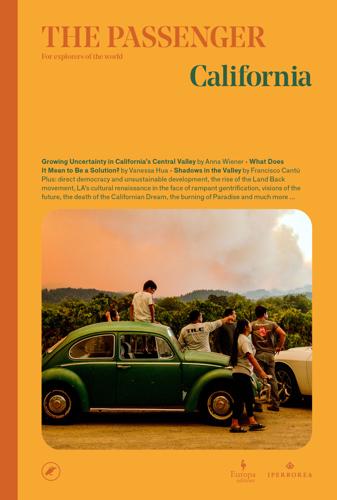
The Passenger
by
AA.VV.
Published 23 May 2022
She has received numerous honours for her photography, including World Press Photo, National Geographic, China Press Photo, Czech Press Photo awards. California—which, like all political entities with distinct borders, is an imaginary place that was for a long time called something else and something else still before that—is nothing if not a canvas for reinvention. “The future always looks good in the golden land,” Joan Didion famously wrote of the state in Slouching Toward Bethlehem, “because no one remembers the past.” Of course, she’s referring only to white people—the Californians who have a particular stake in forgetting. Europeans flocked to California on the promise of riches, yes, but for something much more than that: a chance to transform themselves, to leave the past behind in order to manifest an impossible future at the edge.
…
Governor Gavin Newsom, who in September 2021 won a recall election that threatened to remove him from office, has asked Californians to reduce their personal water usage by 15 per cent. This isn’t the first such request, and people know what to do: they neglect the lawn, skip the car wash, watch the tap, and line the bathtub with buckets for gray water. Before I lived in California, I used to find Joan Didion’s rhapsodic appreciation of municipal waterworks in her 1977 essay “Holy Water”—“The water I will draw tomorrow from my tap in Malibu is today crossing the Mojave Desert from the Colorado River, and I like to think about exactly where that water is”—a little unconvincing. It seemed like poetic license.
…
The “town with a future” went the slogan. MARK ARAX is a journalist and writer who grew up in a Central Valley farming family, and he has spent his working life reporting on his home state of California. His style has been compared with that of William Saroyan and the great social portraits of Joan Didion. His biography of J.G. Boswell, the greatest agricultural entrepreneur in US history, The King of California: J.G. Boswell and the Making of a Secret American Empire (PublicAffairs, 2005), won a California Book Award and the William Saroyan prize. His most recent title, The Dreamt Land: Chasing Water and Dust Across California (Knopf, 2019), which also garnered a California Book Award, investigates the history of land and water use and misuse in California.
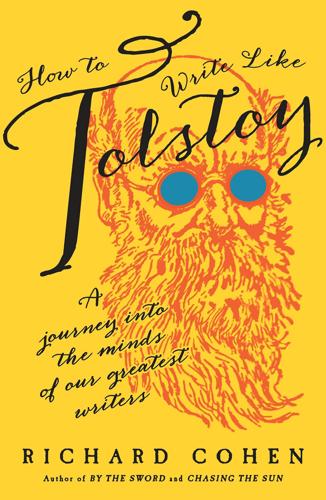
How to Write Like Tolstoy: A Journey Into the Minds of Our Greatest Writers
by
Richard Cohen
Published 16 May 2016
I have spent many months on a first paragraph, and once I get it, the rest just comes out very easily. In the first paragraph you solve most of the problems with your book. The theme is defined, the style, the tone. At least in my case, the first paragraph is a kind of sample of what the rest of the book is going to be. Joan Didion had her own take on this: “What’s so hard about that first sentence is that you’re stuck with it. Everything else is going to flow out of that sentence. And by the time you’ve laid down the first two sentences, your options are all gone.” More happily, according to the Canadian writer Mavis Gallant, authorship “is like a love affair: the beginning is the best part
…
After Fitzgerald had completed his initial draft his editor, Maxwell Perkins, wrote to him: You adopted exactly the right method of telling it, that of employing a narrator who is more of a spectator than an actor: this puts the reader upon a point of observation on a higher level than that on which the character stands and at a distance that gives perspective. In no other way could your irony have been so immensely effective. This holds true for, among others, several fictions by Joseph Conrad. Joan Didion, interviewed in 2006, picked out his 1915 novel Victory because of the way the plot unfolds: The story is told thirdhand….So there’s this fantastic distancing of the narrative, except that when you’re in the middle of it, it remains very immediate. It’s incredibly skillful….It opens up the possibilities of the novel.
…
And the child thinks: ‘Only seven!’ I sometimes feel the same way about the personal pronouns….Only three!—or perhaps: Only six! I’d invent a fourth person, if I could….” Important though it is to decide who is to tell the story, such a question is part of the larger issue touched on earlier—what Joan Didion called “the distancing of the narrative.” This slightly forbidding phrase concerns the space that exists between a reader and a story. At the most basic level, standing apart from one’s characters creates detachment, while a more intimate distance promotes empathy and identification. In film, we are accustomed to seeing a camera used in wide-angle or in close-up; the same applies, through many shifts, to the written word.
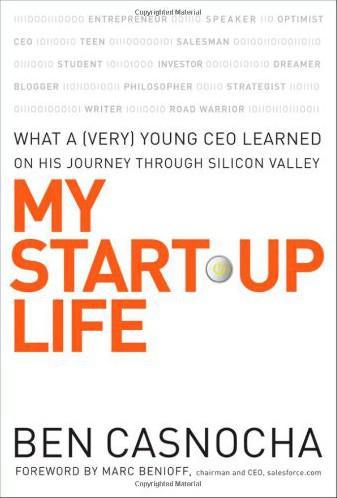
My Start-Up Life: What A
by
Ben Casnocha
and
Marc Benioff
Published 7 May 2007
. >> I am fortunate in many ways: I grew up in the San Francisco Bay Area, home to some of the world’s smartest business and technology practitioners; I have tremendously supportive parents; I’ve gone to good schools. But I want to convince you that these circumstances alone are not enough to guarantee success. I’ve met with entrepreneurs young and old all over the world and the common thread is a spirit, not a background or location. Writer Joan Didion captured the necessary spirit in the conclusion of a commencement address at the University of California, Riverside. Read these words, read this book, and then go out and make things happen! I’m not telling you to make the world better, because I don’t think that progress is necessarily part of the package.
…
Appendix A: What’s Next I spent a long, long time on this book. And with the way the publishing world works, I probably won’t make much money on it. I wrote it because I believe in the power of each of us to change the world. So I only ask of you one thing: begin. Get started. “Live in life,” as Joan Didion would say. Go start a company. Go start a club. Create a website, write a blog, cold-call your hero. Buy this book for your friends and talk about it. Talk about entrepreneurship. Read more books. But start. Now. The clock is ticking. If not now, when? If not you, who? I’m ready to help. Tap into a larger community around My Start-Up Life by visiting the companion website: www.mystartuplife.com.
…
by William Marling Intellectual Life The Blank Slate, by Steven Pinker The Presentation of Self in Everyday Life, by Erving Goffman Reflections by an Affirmative Action Baby, by Stephen Carter Integrity, by Stephen Carter The Accidental Asian, by Eric Liu Mind Wide Open, by Steven Johnson Socrates Café, by Chris Phillips Self-Renewal, by John Gardner Public Intellectuals, by Richard Posner Psychology Influence: The Psychology of Persuasion, by Robert Cialdini Flow, by Mihaly Csikszentmihalyi Man’s Search for Meaning, by Viktor Frankl Biography/Memoir My Life, by Bill Clinton This Boy’s Life, by Tobias Wolff Swimming Across, by Andy Grove All Over But the Shoutin’, by Rick Bragg Personal History, by Katherine Graham Emerson: Mind on Fire, by Robert Richardson In an Uncertain World, by Robert Rubin The Year of Magical Thinking, by Joan Didion Religion End of Faith, by Sam Harris The Universe in a Single Atom, by the Dalai Lama APPENDIX C The World’s Religions, by Huston Smith The Bhagavad-Gita Plan B: Further Thoughts on Faith, by Anne Lamott Under the Banner of Heaven, by Jon Krakauer Politics/Current Affairs Ghost Wars, by Steve Coll Running the World, by David Rothkopf Founding Brothers, by Joseph Ellis A Conflict of Visions, by Thomas Sowell Going Nucular, by Geoffrey Nunberg America at the Crossroads, by Francis Fukuyama Holidays in Hell, by P.
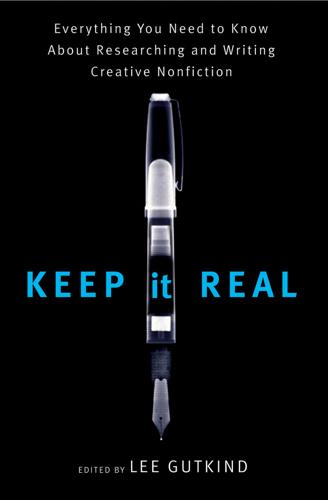
Keep It Real: Everything You Need to Know About Researching and Writing Creative Nonfiction
by
Lee Gutkind
Published 1 Jan 2008
All this means that it is safest to write about dead people, next safest to write about public officials and public figures, and safest of all to write only the truth. Evolution of the Genre We have several ways to tell this story. A popular place to begin is in the 1960s, when a group of hardworking reporters and magazine writers began to chafe under the normal restrictions of journalistic writing. They started to break the rules. Writers like Joan Didion, Gay Talese, Lillian Ross, Tom Wolfe, and Hunter S. Thompson embraced a much more personal voice, no longer camouflaging the narrator’s personality. They cultivated the subjective voice, believing that the writer’s point of view had become an integral part of any story. Novelists also turned their hand to writing nonfiction and incorporated the narrative techniques that had served them so well in fiction.
…
Each of these scenes can be used as a building block in a larger story. Subjectivity In traditional journalism, reporters are supposed to be objective, to maintain the style of an omniscient, invisible presence. This objectivity is an essential component of journalistic integrity. But writers like Tom Wolfe or Joan Didion, proponents of New Journalism, rejected this notion; instead they and other writers accepted as necessary the presence, personality, and perceptions of the author. New Journalism and its literary descendants acknowledged and even celebrated the writer’s presence. The author/narrator interacts with other characters, comments upon events, and self-reflectively explores his or her personality in response to the developing story.
…
The author/narrator interacts with other characters, comments upon events, and self-reflectively explores his or her personality in response to the developing story. Creative nonfiction is complexly structured by narrative voice, and the effectiveness of the piece depends, to a large extent, on the author’s narrative presence. For instance, in her classic essay “Slouching towards Bethlehem,” Joan Didion examines 1967 San Francisco with a voice that is precise and emotionally detached. Instead of relying on her own reflections to convey meaning, she carefully chooses scenes and details that pack an emotional wallop. In the essay’s last page and a half, she describes two young children ravaged by the drug scene.
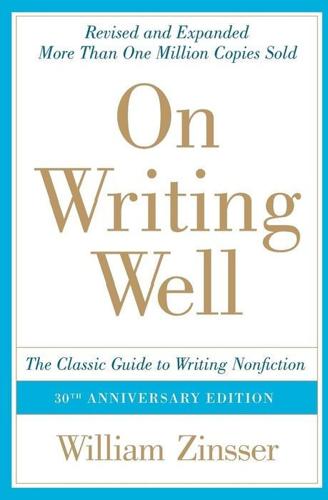
On Writing Well (30th Anniversary Edition)
by
William Zinsser
Published 1 Jan 1976
Vintage Books (paperback), 1955. 29–30 How to Survive in Your Native Land, by James Herndon. Simon & Schuster, 1971. Reprinted by permission of Simon & Schuster, a division of Gulf & Western Corporation. 55–57 The Lunacy Boom, by William Zinsser. Harper & Row, 1970. 59–60 Slouching Toward Bethlehem, by Joan Didion. Farrar, Straus & Giroux, 1968. Copyright 1966 by Joan Didion. Reprinted by permission of the publisher. 61–62 The Dead Sea Scrolls, 1947–1969, by Edmund Wilson. Renewal copyright 1983 by Helen Miranda Wilson. Reprinted by permission of Farrar, Straus & Giroux, Inc. 65 “Coolidge,” by H. L. Mencken. From The Vintage Mencken. 66 Pop Goes America, by William Zinsser.
…
And I’m very tired of the have-in-common lead: “What did Joseph Stalin, Douglas MacArthur, Ludwig Wittgenstein, Sherwood Anderson, Jorge Luis Borges and Akira Kurosawa have in common? They all loved Westerns.” Let’s retire the future archaeologist and the man from Mars and the button-nosed boy. Try to give your lead a freshness of perception or detail. Consider this lead, by Joan Didion, on a piece called “7000 Romaine, Los Angeles 38”: Seven Thousand Romaine Street is in that part of Los Angeles familiar to admirers of Raymond Chandler and Dashiell Hammett: the underside of Hollywood, south of Sunset Boulevard, a middle-class slum of “model studios” and warehouses and two-family bungalows.
…
Finally I said, “We’re here to talk about the craft of writing.” He didn’t know what to make of that, and he began to invoke the names of authors like Ernest Hemingway and Saul Bellow and William Styron, whom we surely regarded as literary giants. We said those writers didn’t happen to be our models, and we mentioned people like Lewis Thomas and Joan Didion and Gary Wills. He had never heard of them. One of the women mentioned Tom Wolfe’s The Right Stuff, and he hadn’t heard of that. We explained that these were writers we admired for their ability to harness the issues and concerns of the day. “But don’t you want to write anything literary?” our host said.
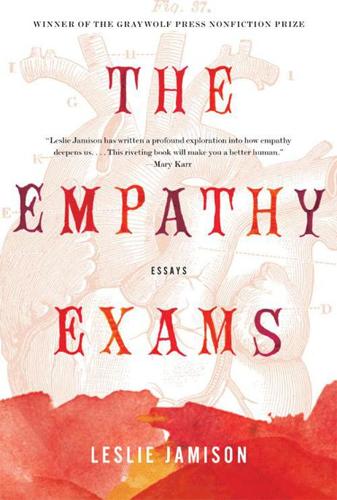
The Empathy Exams: Essays
by
Leslie Jamison
Published 30 Mar 2014
Don’t weep to me. The other face is alabaster pale with blushing stains on its cheeks: sí, te lloro. I cry for you. I weep to you. I leave weeping. I’m just kidding. Don’t weep to me. The wounded one will not permit herself. And yet, does. Servicio Supercompleto Near the beginning of Salvador, Joan Didion’s 1983 account of a repressive state in the thick of civil war, Didion goes to the mall. She’s looking for the truth of a country held in its aisles, and also tablets to purify her drinking water. She doesn’t find the tablets, but she does find everything else: imported foie gras and beach towels printed with maps of Manhattan, cassette tapes of Paraguayan music, vodka bottles packaged with stylish glasses.
…
“I see no motive,” says a disembodied voice in the first film, while the camera prowls the forest floor—getting close to the ground as if hunting for it, this lost motive, nestled in tangled tree roots or buried in a creek gully long gone dry. The parents need an explanation. So do reporters. So do prosecutors. There’s no motive apparent so motives are found. The press says “Satanic orgy.” The parents seem convinced of devil worship. Damien calls West Memphis “Second Salem.” “We tell ourselves stories in order to live,” Joan Didion wrote, meaning frightened people need motives. Meaning everyone does. A preacher remembers Damien saying he couldn’t be saved. He hadn’t taken the Bible into his heart. Damien self-identifies as Wiccan—which he explains on the stand as “basically a close involvement with nature.” Hearing him say this, I can’t help thinking of the woods.
…
Near the conclusion of her own magnificent 1994 reconnaissance of those elusive psychic perimeters, Autobiography of a Face, Lucy Grealy wrote: I used to think truth was eternal, that once I knew, once I saw, it would be with me forever, a constant by which everything else could be measured. I know now that this isn’t so, that most truths are inherently unretainable, that we have to work all our lives to remember the most basic things. Grealy is one of the provisional guides Leslie Jamison invokes in The Empathy Exams, along with Caroline Knapp, James Agee, Frida Kahlo, Joan Didion, Anne Carson, Susan Sontag, Elaine Scarry, and Vladimir Propp, among others, and something of Grealy’s canniness and persistence spurs Jamison. As readers (maybe also authors) we are so acclimated to reductive and tidy literary niches, enclosures, and genres—can the book in our hands safely be branded a memoir, a collection of essays, reportage, science, anthropology, cultural criticism, theory?
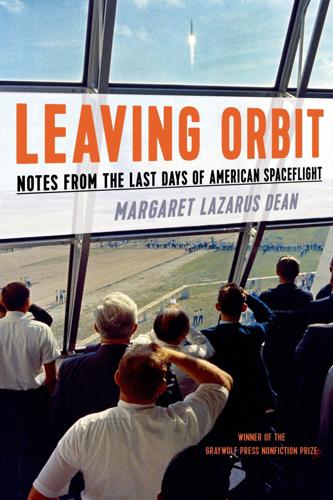
Leaving Orbit: Notes From the Last Days of American Spaceflight
by
Margaret Lazarus Dean
Published 18 May 2015
To Elliot, and the future Lovell: Well, how about let’s take off our gloves and helmets, huh? Anders: Okay. Lovell: I mean, let’s get comfortable. This is going to be a long trip. —Transcript of Apollo 8, first mission to lunar orbit, 1968 It is easy to see the beginnings of things, and harder to see the ends. —Joan Didion, “Goodbye to All That,” 1968 CONTENTS Prologue: Air and Space Chapter 1. The Beginnings of the Future: This Is Cape Canaveral Chapter 2. What It Felt Like to Walk on the Moon Chapter 3. Good-bye, Discovery Chapter 4. A Brief History of the Future Chapter 5. Good-bye, Endeavour Chapter 6.
…
Norman Mailer gripes about being packed into buses with the other journalists, all of them sweating through their shirts and ties, smoking and cursing the brutal Florida heat. I have the luxury of driving my own air-conditioned car; instead of a shirt and tie I wear a sundress, a beach hat, and enormous sunglasses that I hope make me look like Joan Didion. When Norman Mailer gets off the bus at the Press Site, he recounts his impressions (in the third person) of feeling slightly disconnected from the events happening so near yet so far away. He says that people had built up for him how unforgettable the launch experience would be, that he had been promised that the ground would shake.
…
, one of a huge peach-colored full moon hanging low in the sky, the kind of moon that must have made a tempting target for the newly transplanted spaceworkers of the sixties. As the photos upload, I start preparing to teach my next class, Writing Creative Nonfiction. I’ve built into the syllabus a unit I call A Brief History of Creative Nonfiction, in which we spend a few weeks reading Truman Capote, Gay Talese, Joan Didion, John McPhee, Hunter S. Thompson, James Agee, Tom Wolfe, Norman Mailer—important writers who were working in that moment in the sixties when literary journalism converged with a thread of creative writing and the genre we now call creative nonfiction was born. On the syllabus for tomorrow are selections from Tom Wolfe, who is rightfully credited with being one of the founding fathers of creative nonfiction by helping to define the New Journalism.
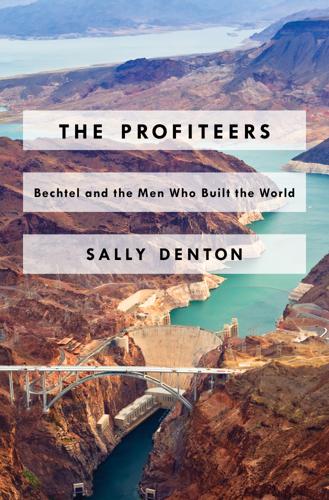
The Profiteers
by
Sally Denton
“The California settlement had tended to attract drifters of loosely entrepreneurial inclination, the hunter-gatherers of the frontier rather than its cultivators, and to reward most fully those who perceived most quickly that the richest claim of all lay not in the minefields, but in Washington,” wrote Joan Didion of the money and power in her native land. Dad Bechtel personified the caricatured mogul of the new western industrialism that blossomed during the Great Depression. Fashioning a fruitful coalition with the federal government, Bechtel and a handful of his peers shaped a resource-based empire that would dominate national affairs for decades to come.
…
Weinberger especially went to great lengths to insure Pollard would never be free to tell his story—a story that would have included Bechtel’s long-standing business relationships with Israel’s enemies in the Middle East—especially Saddam Hussein. * * * PART ONE WE WERE AMBASSADORS WITH BULLDOZERS 1872–1972 * * * This extreme reliance of California on federal money, so seemingly at odds with the emphasis on unfettered individualism that constitutes the local core belief, was a pattern set early on. —JOAN DIDION, Where I Was From CHAPTER ONE Go West! A “tall, beefy man with a bull-like roar,” Warren Augustine Bechtel, whose legacy would be one of the greatest engineering achievements in American history, came into the world on September 12, 1872. The fifth in a family of eight children, he was raised on a hardscrabble farm near Freeport, Illinois.
…
The most esteemed of these camps is Mandalay—named for the Kipling poem—where Steve Jr., like his father before him and his father’s partner, McCone, had been a member his entire adult life, following the patrilineal formation of the Grove. A “virtual personification of Eisenhower’s military-industrial complex,” author Joan Didion once pronounced Mandalay’s roster of members and guests. “Here, shielded from intrusion by a chain-link fence and the forces of the California Highway Patrol,” wrote Laton McCartney, “men like Justin W. Dart, William F. Buckley, George Bush, Edgar Kaiser, Jr., and Tom Watson could walk in the woods, skinny-dip in the Russian River, toast marshmallows over a fire, dress in drag for a ‘low jinks’ dramatic production, and, for a few days at least, hew to The Grove’s motto: ‘Spiders Weave Not Here.’ ” Its edict, taken from Shakespeare’s A Midsummer Night’s Dream, refers to a strict directive that prohibits Bohemians from explicitly conducting business at the Grove.
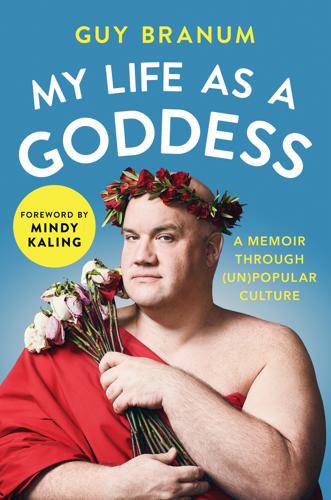
My Life as a Goddess: A Memoir Through (Un)Popular Culture
by
Guy Branum
Published 29 Jul 2018
Yes, he was an aspirational figure for a young gay man like me to see, but the reason I was able to so delight in his identity wasn’t because I imagined I could ever be as suave, seductive, or beautiful as he. I could identify with George because he wasn’t safe. He wasn’t boring. George did nothing to assure Jules or me that happily ever after was our birthright. But he didn’t die, either. He didn’t disappear, diminish, or get sad. George knew there were other joys to be had. Joan Didion says we tell ourselves stories to live. We seek narrative to provide rationalization to the chaos of life. Some people cling to the narrative they are given, by choice or by instinct, finding selves they should be with certain happinesses prescribed for their ends. Some of us don’t. Like D’Erasmo said, we believe our stories are singular and uncapturable.
…
If you don’t know what Mommie Dearest is about, I don’t know why you’re reading this book, but it’s a Faye Dunaway movie about a Joan Crawford who selflessly makes women’s weepy films to give her daughter a better life, then her daughter writes a really mean book about her. 10. Not to be confused with the previously referenced Friends With Benefits, the other fuck-buddy rom-com staring a Black Swan cast member and featuring a bald, gay friend. Fuck-buddy rom-coms were the dueling lambada movies of 2011. JOAN DIDION SLEPT HERE LET’S BE HONEST, I went to college begrudgingly. Sure, I know, I’ve spent all of this book telling you how much I wanted to get out of Yuba City. Isn’t that supposed to be my liberation? The moment when everything gets fine and my story becomes boring and I’m rendered successful and self-assured and perfect: Isn’t this when I, like Oprah, become fixed?
…
I was mad at Berkeley because I did not get in to Stanford. That is why everyone goes to Berkeley. It is a state-funded second prize for overachievers who did not overachieve quite enough. I knew one person at Berkeley who’d gotten in to Stanford and still chose to go to Berkeley. I’m sure she regrets it to this day. Hell, Joan Didion didn’t get in to Stanford, and she invented California. It is my considered belief that not getting in to Stanford builds character. There were other issues with going to college. First of all, no one I knew, except for my teachers, had done it. Second of all, it was a new life. I’d hungered for this life deeply.
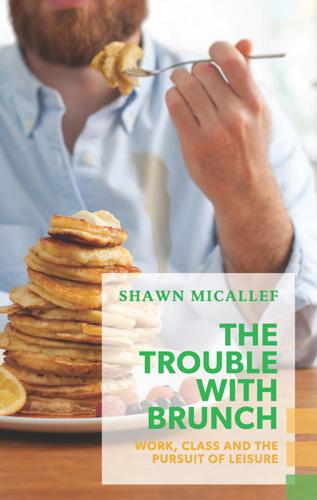
The Trouble With Brunch: Work, Class and the Pursuit of Leisure
by
Shawn Micallef
Published 10 Jun 2014
As a result, solidarity across job categories – ‘card dealer’ and ‘security,’ say – was hard to come by, even though all employees shared a union, the CAW. The effect was, unlike at the auto plants, a loss of cohesion. Working-class Windsor is forever under economic and bureaucratic threat just as California is constantly under the threat of natural forces – not just earthquakes, but drought, the Santa Ana winds, wildfire. Joan Didion writes about this acutely in ‘Los Angeles Notebook’: It is hard for people who have not lived in Los Angeles to realize how radically the Santa Ana figures into the local imagination. The city burning is Los Angeles’s deepest image of itself; Nathanael West perceived that, in The Day of the Locust; and at the time of the 1965 Watts riots what struck the imagination most indelibly were the fires.
…
In a stunt gone terribly wrong, the cronut was giving people food poisoning, as the maple butter jam was contaminated with staphylococcus aureus, a toxin derived from humans via skin, infected cuts, pimples, nasal passages and the throat. The story could not have a more descriptive villain. As people got sick, there was both a sense of schadenfreude that they got what they deserved, but also an unsurprised sense of knowing this is how it was always supposed to end, much like when Joan Didion saw Los Angeles on fire from the Harbor Freeway. Extreme food will, inevitably, end with one kneeling over a toilet. Though the hype around the annual CNE stunt food has an air of fun about it, media plays a big role in constructing the artifice around brunch too. When I ask her how race, gender and sexuality intersect with brunch, Farha Ternikar says she doesn’t think race plays a big role in brunch scenes (though it’s easily mocked as a ‘Stuff White People Like’ pastime), saying it’s much more about class.

Track Changes
by
Matthew G. Kirschenbaum
Published 1 May 2016
“José Saramago, “The Art of Fiction No. 155,” interviewed by Donzelina Barroso, Paris Review, Winter 1998, http://www.theparisreview.org/interviews/1032/the-art-of-fiction-no-155-jose-saramago. 41. Amos Oz, “The Art of Fiction No. 148,” interviewed by Shusha Guppy, Paris Review, Fall 1996, http://www.theparisreview.org/interviews/1366/the-art-of-fiction-no-148-amos-oz. 42. Joan Didion, “The Salon Interview: Joan Didion,” interviewed by Dave Eggers, Salon, October 28, 1996, http://www.salon.com/1996/10/28/interview_11/. 43. Maria Nadotti, “An Interview with Don DeLillo,” trans. Peggy Boyers, ed. Don DeLillo, Salmagundi 100 (Fall 1993): 86–97. 44. See Patricia Cohen, “No Country for Old Typewriters: A Well-Used One Heads to Auction,” New York Times, November 30, 2009, http://www.nytimes.com/2009/12/01/books/01typewriter.html?
…
“The word processor program moves blocks of type around (any size); writes over a line that isn’t perfect, leaving no trace; erases words or lines or paragraphs in a second or two; and when I’m ready it prints as pretty a manuscript as you ever saw, with justified margins and no visible corrections.”37 The prolific fantasist Piers Anthony switched to a computer in 1985 only after his wife, a computer engineer, convinced him that the keyboard could be reprogrammed to re-create the custom Dvorak layout he insisted on using with his manual typewriter.38 Then there is Jorie Graham: “I still use it like a fancy typewriter.”39 José Saramago: “What I do on the computer is exactly what I would do on the typewriter if I still had it, the only difference being that it is cleaner, more comfortable, and faster. Everything is better.”40 Amos Oz: “The word processor is, for me, nothing but a typewriter, only you don’t have to use Typex to erase or correct a mistake.”41 Joan Didion, commenting on the IBM Thinkpad she was using at the time of a 1996 interview, likewise stated, “I just use it like a typewriter.” But she immediately complicates her own response, adding, “Before I started working on a computer, writing a piece would be like making something up every day, taking the material and never quite knowing where you were going to go next with the material.
…
NINE REVEAL CODES When John Barth needed to find a way to introduce a collection of his short stories in the aftermath of the September 11 attacks, he turned to a word processing metaphor—WYSIWYG, or “Wys” for short—conferring its name on the “brackish tidewater marsh-nymph” who becomes Barth’s interlocutor as he works through his relationship to what would now strike him as eleven “mostly Autumnal and impossibly innocent” pieces of fiction.1 Joan Didion begins The Year of Magical Thinking (2006) by recounting the properties of the Microsoft Word file containing the first words she wrote after her husband’s death from a heart attack as he was sitting across the kitchen table from her. The file’s seemingly inconsequential technical details are proffered by Didion as a kind of touchstone, an objective anchor for her memories even as she asserts her autonomy over a misleading date stamp: “That would have been a case of my opening the file and reflexively pressing save when I closed it.”2 Paul Kafka’s Love [ENTER] (1997) features chapters named for its characters with a date stamp and a time stamp and the suffix .doc appended to each of them, for example “10/23/92 23:06 Bou.Doc.”
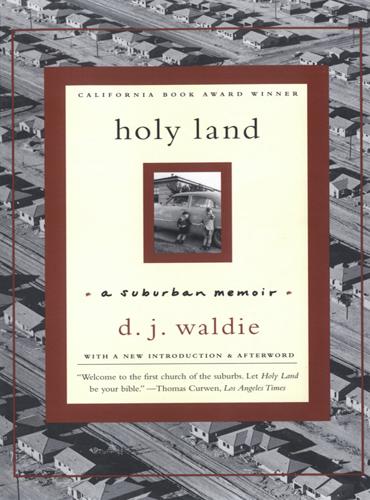
Weimar Culture: The Outsider as Insider
by
Weimar Gay
Published 31 Dec 2001
Some names are only a letter. Behind that anonymity is a real life, however, not a composite. This new edition includes an introduction and an afterword. John Balzar and Thomas Curwen, writers for the Los Angeles Times and homeowners in neighborhoods not far from mine, inspired the afterword’s questions and answers. Joan Didion quoted from Holy Land in an article in The New Yorker in 1993. I am indebted to her persistent regard for this book. Historian Kevin Starr offered additional encouragement, which also has continued through the years. Randy Burger took an early interest in these stories that parallel his boyhood in southern California.
…
Platt, manager of the May Co. music and TV department (Security Pacific National Bank Photograph, Collection of the Los Angeles Public Library) Shopping at night (Rothschild Photo) Shoe store opening (Rothschild Photo) Model living room (Rothschild Photo) Model kitchen (Rothschild Photo) Sales office tower (Rothschild Photo) Waiting in line (Rothschild Photo) FURTHER PRAISE FOR HOLY LAND “Infinitely moving and powerful, just dead-on right, and absolutely original.” —Joan Didion “Waldie is much too close to Lakewood to sentimentalize it and far too deeply rooted there to buy into any glib notions of its placelessness. He has written a quirky, multidimensional portrait of Lakewood in the form of a mosaic.… And by the end of this short, fascinating book, he has presented Lakewood with a history as rich and various—as storied—as the most ancient of cities.”
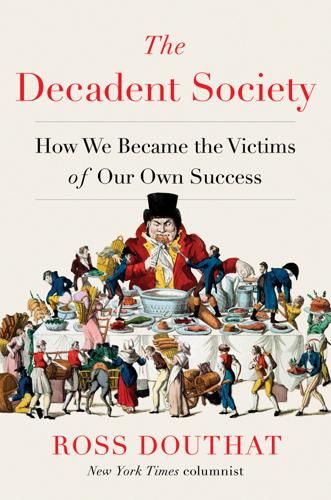
The Decadent Society: How We Became the Victims of Our Own Success
by
Ross Douthat
Published 25 Feb 2020
Lady Gaga has replaced Madonna, Adele has replaced Mariah Carey—both distinctions without a real difference—and Jay-Z and Wilco are still Jay-Z and Wilco. Except for certain details (no Google searches, no e-mail, no cell phones), ambitious fiction from 20 years ago (Doug Coupland’s Generation X, Neal Stephenson’s Snow Crash, Martin Amis’s Time’s Arrow) is in no way dated, and the sensibility and style of Joan Didion’s books from even twenty years before that seem plausibly circa 2012. … Not long ago in the newspaper, I came across an archival photograph of Ian Schrager and Steve Rubell with a dozen of their young staff at Morgans, the ur-boutique hotel, in 1985. It was an epiphany. Schrager’s dress shirt had no collar, and some of the hair on his male employees was a bit unfashionably fluffy, but no one in the picture looks obviously, laughably dated by today’s standards.… Yet if, in 1990 or 1980 or 1970, you’d examined a comparable picture from 27 years earlier—from 1963 and 1953 and 1943, respectively—it would be a glimpse back into an unmistakably different world.
…
Sit down with the first season of Mad Men or an equivalent primary source and then watch the 1970 Woodstock documentary and marvel at the antinomy. Read a sheaf of New Yorkers from the heyday of William Shawn, E. B. White, and James Thurber, and then read your way through the New Journalism—starting with Tom Wolfe’s savaging of Shawn, and then on through Garry Wills, Joan Didion, and Hunter S. Thompson—and you’ll see a conflict between two potencies, two strong cultural approaches, with the younger one not just tearing at weak points but also feeding off the older order’s strength. Pick up a novel or a memoir whose characters inhabit the pre–Vatican II Catholicism of the 1940s and then read the liberalizing theologians whose work defined the Catholic 1960s and 1970s, and you’ll see one generation’s confidence clashing with another’s, a liberal certainty blazing up to overthrow a religious culture that felt timeless just a few short years before.
…
That often happens; in periods before true political upheaval, the rebel, the rioter, the street fighter, even the terrorist is more tuned in to what’s really going on—or what’s really coming—than the law-abiding citizen. You could understand the future of Germany better in 1930 by watching Brownshirts and Reds fight in the streets than by hanging out with middle-class shopkeepers; you could see the American future more clearly in the abolitionist John Brown’s wild career than anywhere else in the 1850s. Joan Didion’s famous essay “Slouching Towards Bethlehem” was published “in the cold late spring of 1967,” and she argued that even though the economy was strong and the country seemed superficially stable, you could tell that America’s “center was not holding” by visiting Haight-Ashbury and pondering the hippies.
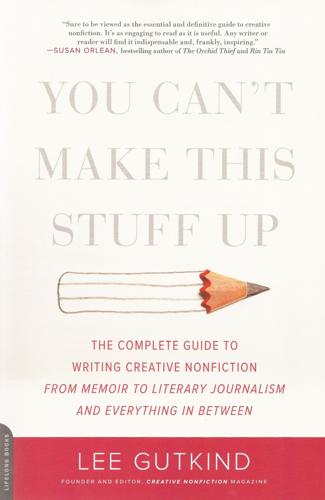
You Can't Make This Stuff Up: The Complete Guide to Writing Creative Nonfiction--From Memoir to Literary Journalism and Everything in Between
by
Lee Gutkind
Published 13 Aug 2012
These were wonderful, formative experiences for me, although frenetic and wild, especially when I soared through those dark country roads on two wheels. Passion is what’s required of a creative nonfiction writer—passion for people, passion for the written word, passion for knowledge, passion for spontaneity of experience, passion to understand how things work. As Joan Didion said in a New York Times Magazine article titled “Why I Write” (1976), “I write to find out what I am thinking, what I am looking at, what I see, and what it means.” I know it is easy to provide examples of famous writers (and athletes), but what about people laboring alone and in the dark, who have yet to achieve success?
…
“Lyric essay” is a term that confounds many people, perhaps because “lyric,” a poetic term, and “essay,” a more fact-oriented term, don’t seem to fit together. But they can fit and often do, as John D’Agata demonstrates in his 2002 anthology, The Next American Essay. D’Agata brings together work from such creative nonfiction masters as John McPhee, Susan Sontag, Joan Didion, and Annie Dillard to demonstrate the scope of the lyrical form of creative nonfiction, blending biography, poetry, philosophy, and memoir. As I have mentioned on page 25, D’Agata, along with his mentor, poet Deborah Tall, helped introduce the lyric essay in a literary journal, the Seneca Review (a publication of Hobart and William Smith colleges), which Tall edited from 1982 until her death in 2006.
…
Also in theaters this year: Morgan Spurlock’s Super Size Me, for which the filmmaker ate only McDonald’s food for a month, gaining 24.5 pounds in the process. 20 05 Oprah’s Book Club selects A Million Little Pieces; James Frey appears on an episode entitled “The Man Who Kept Oprah Awake at Night.” The Oprah edition of the paperback sells more than 2 million copies. - The Year of Magical Thinking, Joan Didion’s exploration of grief and the year following her husband’s unexpected death, wins the National Book Award for nonfiction. - Scandal? The family of Dr. Rodolph H. Turcotte files suit against Augusten Burroughs and his publisher, St. Martin’s, for invasion of privacy and defamation of character based on Burroughs’s depiction of the family in Running with Scissors.

The Uninhabitable Earth: Life After Warming
by
David Wallace-Wells
Published 19 Feb 2019
For a poetic approximation, it was not a bad estimate of how much of a handle we have on the forces of climate change that unleashed the Thomas Fire and the many other environmental calamities for which it was an apocalyptic harbinger. That is to say, hardly any. “The city burning is Los Angeles’s deepest image of itself,” Joan Didion wrote in “Los Angeles Notebook,” collected in Slouching Towards Bethlehem, published in 1968. But the cultural impression is apparently not all that deep, since the fires that broke out in the fall of 2017 produced, in headlines and on television and via text messages, an astonished refrain of the adjectives “unthinkable,” “unprecedented,” and “unimaginable.”
…
Wildfire Thomas Fire, the worst: CalFire, “Incident Information: Thomas Fire,” March 28, 2018, http://cdfdata.fire.ca.gov/incidents/incidents_details_info?incident_id=1922. “15% contained”: CalFire, “Thomas Fire Incident Update,” December 11, 2017, http://cdfdata.fire.ca.gov/pub/cdf/images/incidentfile1922_3183.pdf. “Los Angeles Notebook”: Joan Didion, Slouching Towards Bethlehem (New York: Farrar, Straus & Giroux, 1968). Five of the twenty worst fires: CalFire, “Top 20 Most Destructive California Wildfires,” August 20, 2018, www.fire.ca.gov/communications/downloads/fact_sheets/Top20_Destruction.pdf. 1,240,000 acres: CalFire, “Incident Information: 2017,” January 24, 2018, http://cdfdata.fire.ca.gov/incidents/incidents_stats?
…
This is a note of contrarian optimism echoing Michael Shellenberger and Ted Nordhaus, in their Break Through: Why We Can’t Leave Saving the Planet to Environmentalists and Love Your Monsters: Postenvironmentalism and the Anthropocene; and the Canadian, Swedish, and South African academics behind the research collaboration “Bright Spots,” who, despite considerably more concern about the effects of global warming, nevertheless keep a running list of positive environmental developments they believe makes the case for what they call a “good Anthropocene.” “The Second Coming”: Among other things, Yeats gave Joan Didion the lines she built into her essay “Slouching Towards Bethlehem”: “Things fall apart; the centre cannot hold; / Mere anarchy is loosed upon the world.” “immanent anti-humanism”: The program is also neatly contained in Jeffers’s most famous poem, “Carmel Point”: We must uncenter our minds from ourselves; We must unhumanize our views a little, and become confident As the rock and ocean that we were made from.
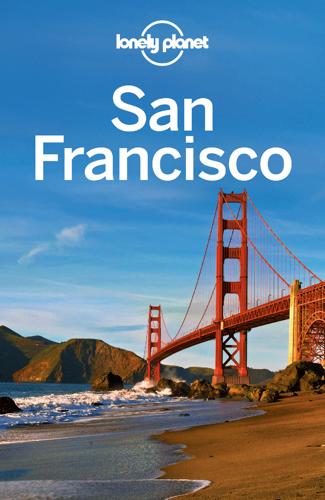
San Francisco
by
Lonely Planet
➡ The Maltese Falcon (Dashiell Hammett) In this classic noir novel, private eye Sam Spade risks his reputation on a case involving an elusive redhead, a gold statuette, the Holy Roman Empire and an unholy cast of thugs. Nonfiction & Memoir People-watching rivals reading as a preferred San Francisco pastime, and close observation of antics that would seem bizarre elsewhere pays off in stranger-than-fiction nonfiction – hence Hunter S Thompson’s gonzo journalism and Joan Didion’s core-shaking truth-telling. Key titles: ➡ Slouching Towards Bethlehem (Joan Didion) Like hot sun through San Francisco fog, Didion’s 1968 essays burn through the hippie haze to reveal glassy-eyed teenagers adrift in the Summer of Love. ➡ On the Road (Jack Kerouac) The book Kerouac banged out on one long scroll of paper in a San Francisco attic over a couple of sleepless months of 1951 shook America awake
…
City Arts & Lectures Lectures Offline map Google map ( box office 415-392-4400; www.cityarts.net; Herbst Theater, 401 Van Ness Ave; tickets from $17; & Civic Center) The city’s foremost lecture series hosts an all-star lineup of today’s most celebrated artists, writers and intellectuals, from Joan Didion to David Sedaris and Madeline Albright to Tina Fey. Most take place at the Herbst Theater, and are broadcast on local public-radio station KQED-FM (88.5); check the website for schedules. Warfield Live Music Offline map Google map ( 800-745-3000; www.thewarfieldtheatre.com; 982 Market St; admission varies; box office 10am-4pm Sun & 90min before curtain on show nights; & Powell St) Famous names play this former vaudeville theater, including the Beastie Boys and PJ Harvey; when Furthur (formerly the Grateful Dead) play, the balcony fills with pot smoke.
…
Best in Print Howl and Other Poems (Allen Ginsberg; 1956) Mind-altering, law-changing words defined a generation of ‘angel-headed hipsters.’ Time and Materials (Robert Hass; 2007) Every Pulitzer Prize-winning syllable is as essential as a rivet in the Golden Gate Bridge. On the Road (Jack Kerouac; 1957) Banged out in a San Francisco attic, Kerouac’s travelogue set post-war America free. Slouching Towards Bethlehem (Joan Didion; 1968) Scorching truth burns through San Francisco fog during the Summer of Love. Green City, USA In 2011, San Francisco was named North America’s Greenest City, and you’ll notice that distinction when it comes to choosing what eat and drink, where to sleep, what souvenirs to buy and how to get around town.
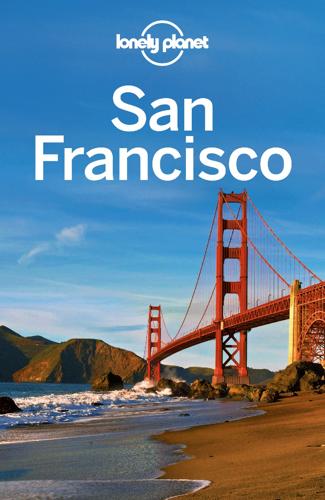
San Francisco
by
Lonely Planet
➡ The Maltese Falcon (Dashiell Hammett) In this classic noir novel, private eye Sam Spade risks his reputation on a case involving an elusive redhead, a gold statuette, the Holy Roman Empire and an unholy cast of thugs. Nonfiction & Memoir People-watching rivals reading as a preferred San Francisco pastime, and close observation of antics that would seem bizarre elsewhere pays off in stranger-than-fiction nonfiction – hence Hunter S Thompson’s gonzo journalism and Joan Didion’s core-shaking truth-telling. Key titles: ➡ Slouching Towards Bethlehem (Joan Didion) Like hot sun through San Francisco fog, Didion’s 1968 essays burn through the hippie haze to reveal glassy-eyed teenagers adrift in the Summer of Love. ➡ On the Road (Jack Kerouac) The book Kerouac banged out on one long scroll of paper in a San Francisco attic over a couple of sleepless months of 1951 shook America awake
…
City Arts & Lectures Lectures Offline map Google map ( box office 415-392-4400; www.cityarts.net; Herbst Theater, 401 Van Ness Ave; tickets from $17; & Civic Center) The city’s foremost lecture series hosts an all-star lineup of today’s most celebrated artists, writers and intellectuals, from Joan Didion to David Sedaris and Madeline Albright to Tina Fey. Most take place at the Herbst Theater, and are broadcast on local public-radio station KQED-FM (88.5); check the website for schedules. Warfield Live Music Offline map Google map ( 800-745-3000; www.thewarfieldtheatre.com; 982 Market St; admission varies; box office 10am-4pm Sun & 90min before curtain on show nights; & Powell St) Famous names play this former vaudeville theater, including the Beastie Boys and PJ Harvey; when Furthur (formerly the Grateful Dead) play, the balcony fills with pot smoke.
…
Best in Print Howl and Other Poems (Allen Ginsberg; 1956) Mind-altering, law-changing words defined a generation of ‘angel-headed hipsters.’ Time and Materials (Robert Hass; 2007) Every Pulitzer Prize-winning syllable is as essential as a rivet in the Golden Gate Bridge. On the Road (Jack Kerouac; 1957) Banged out in a San Francisco attic, Kerouac’s travelogue set post-war America free. Slouching Towards Bethlehem (Joan Didion; 1968) Scorching truth burns through San Francisco fog during the Summer of Love. Green City, USA In 2011, San Francisco was named North America’s Greenest City, and you’ll notice that distinction when it comes to choosing what eat and drink, where to sleep, what souvenirs to buy and how to get around town.
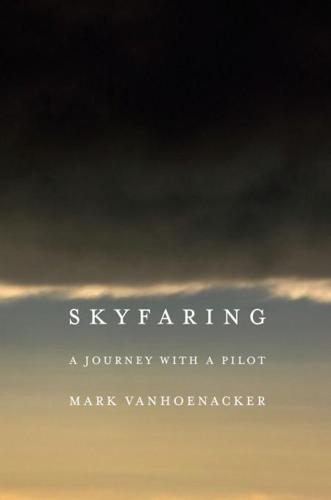
Skyfaring: A Journey With a Pilot
by
Mark Vanhoenacker
Published 1 Jun 2015
Henry Holt and Company, LLC: Excerpt from “Kitty Hawk” from The Poetry of Robert Frost edited by Edward Connery Lathem, copyright © 1969 by Henry Holt and Company, copyright © 1956, 1962 by Robert Frost. All rights reserved. Reprinted by permission of Henry Holt and Company LLC. Janklow & Nesbit Associates: Excerpt from The Year of Magical Thinking by Joan Didion. Reprinted by permission of Joan Didion c/o Janklow & Nesbit Associates. Mark Whyles Management Ltd: Excerpt from “Salters Road” by Karine Polwart. Reprinted by permission of Karine Polwart c/o Mark Whyles Management Ltd. Penguin Random House: Excerpt from “The Poem of Flight” from New Selected Poems by Philip Levine, copyright © 1991 by Philip Levine; excerpt from Travels With Charley by John Steinbeck (Penguin Books, 1992), copyright © 1961, 1962 by The Curtis Publishing Company Inc., copyright © 1962 by John Steinbeck, copyright renewed 1989, 1990 by Elaine Steinbeck, Thom Steinbeck and John Steinbeck IV.
…
The world remains unequal, in light as in almost everything else, and the lesson of Kinshasa lies open to the sky, in the dimmed night-whorl of its fingerprint. — Sometimes when I fly to Los Angeles I arrive from the northwest, from over the shadowed mountains of Malibu, and the city suddenly looms into view like a bowl of phosphorescence gathered from the surface of the Pacific. Los Angeles, from a clear night above it, may alone explain why Joan Didion wrote that “the most beautiful things I had ever seen had all been seen from airplanes.” Even when you come to Los Angeles from the east, from over the land, the deserts are all but empty until you overfly the last great crescent of the city’s mountains. In this sense the city approached from any direction is an island, ablaze between two oceans.
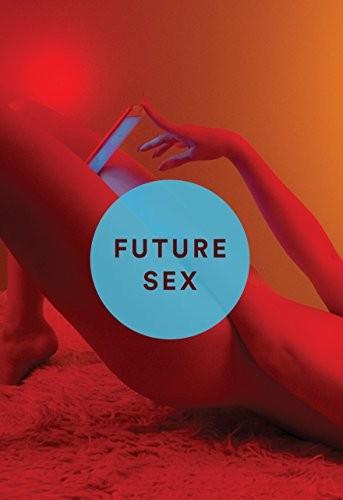
Future Sex
by
Emily Witt
Published 10 Oct 2016
At the time we slept together he had been seeing another woman, who lived on the West Coast. He had gone to visit her for Valentine’s Day, and now she was furious with him. She accused him of betrayal and he felt like a scumbag chastised for his moral transgression with a disease. He’d been reading Joan Didion’s essay “On Self-Respect.” I laughed—it was her worst essay—but he was serious. I said the only thing I could say, which was that he was not a bad person, that we were not bad people. That night had been finite and uncomplicated. It did not merit so much attention. After we hung up I lay on the couch and looked at the white walls of my apartment.
…
Some of us would be gay and that would be fine. Many of these families would fall apart, but we did not consider divorce a structural failure of an institution but a set of personal problems. Haight-Ashbury by 1968, when my father arrived there—one summer late, it turned out—was a depressing place. If I doubted his word, I could read Joan Didion’s “Slouching Towards Bethlehem.” Or whoever—I pick Ellen Willis from a dozen possible writers who lived the time and came to the same conclusion, in her essay “Coming Down Again”: Freedom is inherently risky, which is the reason for rules and limits in the first place; the paradox of the ’60s generation is that we felt secure enough, economically and sexually, to reject security.
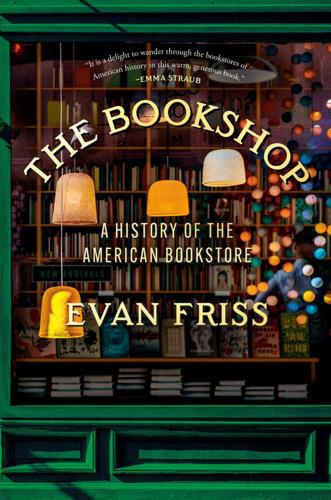
The Bookshop: A History of the American Bookstore
by
Evan Friss
Published 5 Aug 2024
He didn’t think to publish them until a Random House editor told him someone else would inevitably do something similar. He couldn’t stand the idea of being called a copycat, so Self-Portrait: Book People Picture Themselves appeared in 1976 with 739 drawings, including from Saul Bellow, David Markson, Philip Roth, James Baldwin, Truman Capote (who signed his name backward), Joan Didion (who, instead of drawing, scrawled a few lines of text: “Too thin. Astigmatic. Has no visual sense of self.”), Toni Morrison (who sketched wildflowers), and the one who started it all, Norman Mailer (with a cubistic portrait). There were also a few privileged, bookish nonauthors: the Basses, of course, and Frances Steloff, who drew herself as a simple, robot-ish head.
…
The blind Argentine was being read to and simply didn’t want to leave. Kaplan understood. The fair helped Miami develop into a reputable “book town.” Authors began to make it (and Books & Books in particular) a regular stop on national book tours. Kaplan has an encyclopedia’s worth of stories about author visits, including by Joan Didion and her husband, John Gregory Dunne. While Kaplan and Dunne schmoozed, Didion browsed. After they left, Kaplan noticed Dunne’s book arranged face out along the shelf—the only book in the entire store with that distinction. Kaplan called it a “beautiful act of love.” When Kaplan became president of the American Booksellers Association, he oversaw the creation, in 2006, of the Winter Institute, which turned into the place for booksellers to congregate.
…
The dead included Books & Co., arguably the toniest Manhattan shop and the one founded by Jeannette Watson and Burt Britton in 1978. It shuttered in 1997. If any shop was impervious to Barnes & Noble, it would have seemed to be Books & Co., which had an advisory board chaired by Susan Sontag and peopled by Fran Lebowitz, Joan Didion, and Paul Auster. That same year, a Barnes & Noble superstore opened in Park Slope, Brooklyn. (There were already six in Manhattan.) Even before opening day, an independent a block and a half away closed in anticipation. “There was no way we could compete,” the dejected owner said. The ABA, founded in 1900, brought booksellers from across the country together to share best practices, track industry trends, and devise strategies to promote book buying in general.
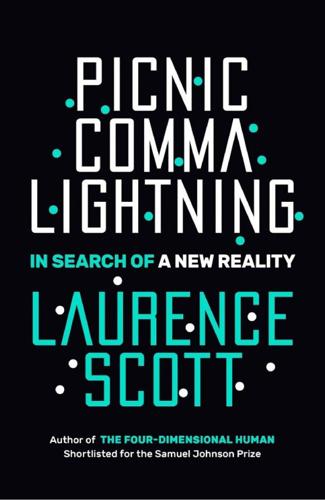
Picnic Comma Lightning: In Search of a New Reality
by
Laurence Scott
Published 11 Jul 2018
In other words, this process is designed to liberate us from stories by asserting a reality beyond them. Important here is the debate that surrounds the act of imagining ourselves in terms of coherent stories – does this give us psychological stability or bring a terrible, limiting rigidity to our inner lives? ‘We tell ourselves25 stories in order to live,’ writes Joan Didion in her essay ‘The White Album’. That is, until we don’t. In 1968, the same year that Muriel Rukeyser wrote that the universe was made of stories, Didion found that her own storytelling instinct had been suppressed. She was living in a house in Hollywood where ‘the window sashes crumbled and the tennis court had not been rolled since 1933’.
…
Constance Farrington (London: Penguin, 2001 [1961]); ‘trying to include …’, Iain Sinclair, The Last London (London: Oneworld, 2017). 23 ‘Once upon a …’, see ‘Toni Morrison – Nobel Lecture’, 7th December 1993, www.nobelprize.org. 24 ‘an underlying assumption …’, Janet Malcolm, ‘Dora’, in The Purloined Clinic: Selected Writings (New York, NY: Alfred A. Knopf, 1992). 25 ‘We tell ourselves …’, Joan Didion, White Album (New York, NY: Farrar, Straus and Giroux, 1979). The End of Things 1 ‘I had no …’, Stephanie Beacham, Many Lives (Carlsbad, CA: Hay House, 2011). 2 ‘There was the …’, Virginia Woolf, ‘A Sketch of the Past’, in Moments of Being (London: Pimlico, 2002 [1939]). 3 ‘is trebly accursed …’, Edward Heron-Allen, quoted in Crispin Paine, Religious Objects in Museums: Private Lives and Public Duties (London: Bloomsbury, 2013). 4 ‘each item within …’, Zygmunt Bauman, Modernity and Ambivalence (Cambridge: Polity, 1991). 5 ‘holding it firmly …’, Marie Kondo, Spark Joy: An Illustrated Guide to the Japanese Art of Tidying (London: Vermilion, 2016). 6 ‘What am I …’, Virginia Woolf, Jacob’s Room (Oxford: Oxford University Press, 2008 [1922]). 7 ‘seemed to fit’, Muriel Spark, Territorial Rights (London: Virago, 2014 [1979]); ‘A sigh of …’, Gustave Flaubert, Madame Bovary, trans.
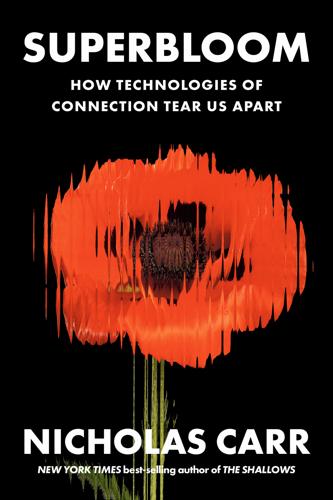
Superbloom: How Technologies of Connection Tear Us Apart
by
Nicholas Carr
Published 28 Jan 2025
The year ended with the election to the presidency of the United States of a malevolent coxscomb with a tweeting habit. The campaign had been marked by the spread, through Facebook, YouTube, Instagram, and other platforms, of thousands of fake and often bizarre news stories from made-up publications, all aimed at misleading or confusing voters. Social media had become, to steal a line from an old Joan Didion essay, “the ganglia of the fantastic electronic pulsing that is life in the United States,” and the neurons were misfiring.12 The controversies didn’t seem to disturb the equilibrium of the Facebook founder and chief executive. He remained unchastened, his cockiness intact. On February 16, 2017, just three months after the contentious U.S. vote, he posted another public letter, this one nearly six thousand words long.
…
Edmund Carpenter and Marshall McLuhan (Boston: Beacon, 1960), 1. 9.See Andrew Pettegree, Brand Luther: 1517, Printing, and the Making of the Reformation (New York: Penguin, 2015). 10.Philip Rieff, introduction to Social Organization: A Study of the Larger Mind, by Charles Horton Cooley (New York: Schocken, 1962), xv. 11.Mark Zuckerberg, “Letter from Mark Zuckerberg,” in prospectus filed with Securities and Exchange Commission, February 1, 2012. 12.Joan Didion, The White Album (New York: Simon & Schuster, 1979), 98. 13.Mark Zuckerberg, “Building Global Community,” Facebook, February 16, 2017, https://www.facebook.com/notes/mark-zuckerberg/building-global-community/10103508221158471. 14.Karen Armstrong, The Bible: A Biography (New York: Grove, 2007), 1. 15.Johann Gottfried von Herder, Philosophical Writings, ed. and trans.
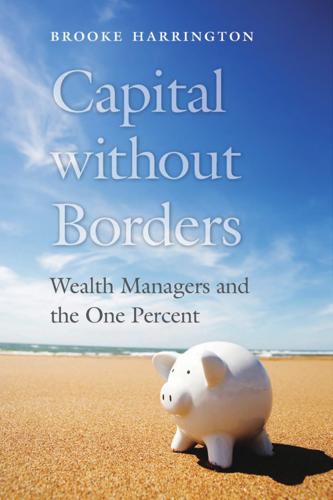
Capital Without Borders
by
Brooke Harrington
Published 11 Sep 2016
Some argue that Israel is a special case due to traditionally high levels of social solidarity; others point out that recent opinion polling among Israelis shows that social solidarity is “quite low,” particularly when it comes to economic inequality and measures to combat it.106 The latter suggests that Israel may indeed offer a useful precedent for some onshore states seeking to stop tax leakage from their boundaries. 7 Conclusion “The secret point of money and power,” wrote Joan Didion, “is neither the things that money can buy nor power for power’s sake … but absolute personal freedom, mobility, privacy.”1 The crucial insight of this book is that professionals make these goals attainable. That is, their application of a particular form of financial-legal expertise to money management provides freedom, mobility, and privacy to the high-net-worth individuals of the world.
…
Adam Hofri, “Professionals’ Contribution to the Legislative Process: Between Self, Client, and the Public,” Law & Social Inquiry 39 (2014): 117. 106. Tamar Hermann, Ella Heller, Chanan Cohen, Gilad Be’ery, and Yuval Lebe, “The Israeli Democracy Index 2014,” Israeli Democracy Institute, Jerusalem, 2014. 7. Conclusion 1. Joan Didion, “7000 Romaine, Los Angeles 38,” Slouching towards Bethlehem, 67–72 (New York: Farrar, Straus, and Giroux, 1968). 2. Ibid. 3. Ronen Shamir, Managing Legal Uncertainty: Elite Lawyers in the New Deal (Durham, NC: Duke University Press, 1995). 4. Jeffrey Winters, Oligarchy (New York: Cambridge University Press, 2011), 219. 5.
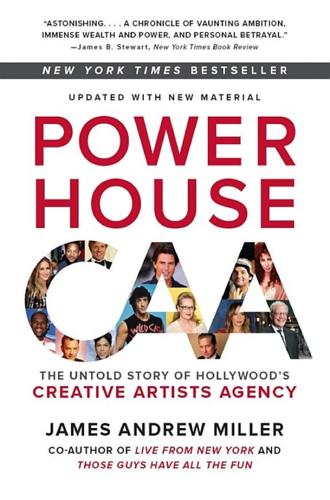
Powerhouse: The Untold Story of Hollywood's Creative Artists Agency
by
James Andrew Miller
Published 8 Aug 2016
But it was brilliant, because it made us all feel like we were in the presence of somebody who makes us feel like we were really important. TONY KRANTZ: The very first thing I ever packaged was a movie-of-the-week based on Joan Didion’s book Salvador about this war in El Salvador. I was working with a producer named Dick Berg and put together a package with a writer named Ernest Tidyman, who had won the Oscar for The French Connection. Shirley MacLaine was going to play Joan Didion. We walked into Harvey Shephard’s office, who was the head of CBS at the time, and we pitched it to him and he bought it in the room. And I came back to the parking lot or whatever it was and Dick said, “Now we’ve got to get the rights.”
…
Chris Brown Bill Broyles Jerry Bruckheimer Genevieve Bujold Sandra Bullock Ken Burns Tim Burton John Calley Robinson Cano Mark Canton Kate Capshaw Glenn Gordon Caron Jim Carrey Johnny Carson Graydon Carter Maverick Carter Dana Carvey Leo Castelli Gil Cates Bob Cavallo Chevy Chase Cher Peter Chernin Robert Chertoff Ted Chervin James Clavell Bill Clinton George Clooney Glenn Close Lee Cohen Sam Cohen Sam Cohn Chris Columbus Sean Connery Martha Coolidge Francis Ford Coppola Sofia Coppola Costa-Gavras Kevin Costner Katie Couric Michael Crichton Hume Cronyn Crosby, Stills & Nash Tom Cruise Lindsay Czarniak Bob Daly Matt Damon Andy Davis Geena Davis John Davis Martha Davis Marvin Davis Roger Davis Gavin de Becker Dan Deirdorf Fred Dekker Peter Dekom Freddy Demann Jonathan Demme Ted Demme Lisa De Moraes Rebecca De Mornay Robert De Niro Brian De Palma Johnny Depp Bo Derek Ira Deutchman Danny DeVito Dean Devlin Neil Diamond Cameron Diaz Leonardo DiCaprio Joan Didion Vin Diesel Barry Diller Celine Dion Richard Donner Lindsay Doran Michael Douglas Peter Drucker Clint Eastwood Blake Edwards Marty Ehrlichman Jane Eisner Michael Eisner Doug Ellin Larry Ellison Roland Emmerich Joe Eszterhas Chad Everett Jeff Fager Tony Fantozzi Frank Farian Chris Farley Will Ferrell Sally Field Bert Fields Carrie Fisher Ryan Fitzpatrick Mick Fleetwood Joe Flint Jane Fonda Harrison Ford Ted Fortsmann Bob Fosse Jamie Foxx Mark Frost Zach Galifianakis Sandy Gallin Alex Gartner Bill Gates David Geffen François Gilles Terry Gilliam Arne Glimcher Roberto Goizueta Eric Gold Whoopi Goldberg Leonard Goldenson Bo Goldman Akiva Goldsmith Roger Goodell Larry Gordon Berry Gordy Sam Gores Donald Grant Brian Grazer Steve Greenberg Brad Grey Wyc Grousbeck Andy Grove Phil Guarascio Peter Guber Marc Gurvitz Gene Hackman Hall and Oates Tom Hanks Tom Hanson Ted Harbert Mark Harmon Jack Harrower Patrick Hasburgh Ethan Hawke Goldie Hawn Salma Hayek Amy Heckerling Ed Helms Gary Hendler John Henry Jonathan Hensleigh Katharine Hepburn Kirk Herbstreit Marshall Herskovitz Steve Heyer Colin Higgins Masahiko Hirata Barry Hirsch Dustin Hoffman Jan Hoffman Ron Howard L.
…
And I came back to the parking lot or whatever it was and Dick said, “Now we’ve got to get the rights.” And I said, “What do you mean we’ve got to get the rights?” He said, “I don’t have the rights to the book.” And I said, “You’re kidding.” I was so young that I didn’t know to ask the question “Did you have the rights?” My mother had Joan Didion’s phone number in her Rolodex, so I called Joan up and explained the mess. She said, “None of my books have ever been produced in film or television. I’m not going to give you the rights.” So I went back to Harvey Shephard and I said, “A huge mistake has happened and I’m very apologetic.” But from that, my bosses felt I had an aptitude for packaging and I started packaging MOWs full time.
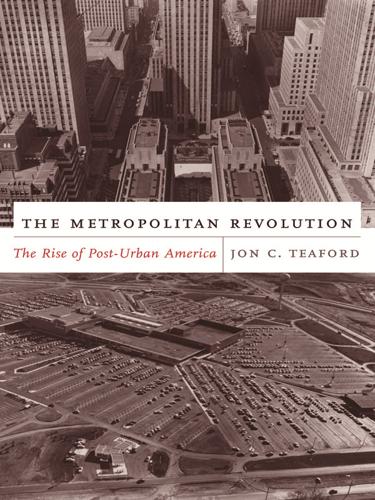
The Metropolitan Revolution: The Rise of Post-Urban America
by
Jon C. Teaford
Published 1 Jan 2006
In 1980 an article in the New York Times Magazine reported on “the Latinization of Miami,” informing readers that “more than half a million Cuban refugees have transformed a declining resort town into a bustling bicultural city.”7 In 1985 Time magazine described Miami’s Calle Ocho district: “Open-air markets sell plantains, mangoes and boniatos (sweet potatoes); old men play excitedly at dominoes in the main park. Little but Spanish is heard on the streets and indeed in many offices and shops. A Hispanic in need of a haircut, a pair of eyeglasses or legal advice can visit a Spanish-speaking barber, optometrist or lawyer.”8 The writer Joan Didion claimed that “the entire tone of the city, the way people looked and talked and met one another, was Cuban…. There was even in the way women dressed in Miami a definable Havana look, a more distinct emphasis on the hips and décolletage, more black, more veiling, a generalized flirtatiousness of style not then current in American cities.”9 The widespread use of Spanish testified to the strong and persistent Cuban influence.
…
Curtis, The Cuban-American Experience: Cultural, Images, and Perspectives (Totowa, N.J.: Rowman and Allanheld, 1984), pp. 41–43. 7. Herbert Burkholz, “The Latinization of Miami,” New York Times Magazine, 21 September 1980, p. 45. 8. “Hispanics: A Visible Presence,” Time, 8 July 1985, p. 37. 9. Joan Didion, Miami (New York: Simon and Schuster, 1987), p. 52. 10. Raymond A. Mohl, “Miami: New Immigrant City,” in Searching for the Sunbelt: Historical Perspective on a Region, ed. Raymond A. Mohl (Knoxville: University of Tennessee Press, 1990), p. 160. 11. Census Bureau, Statistical Abstract: 2003, p. 58. 12.
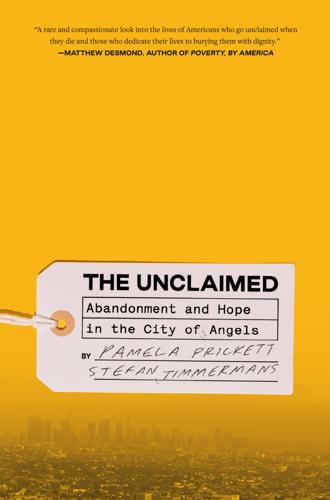
The Unclaimed: Abandonment and Hope in the City of Angels
by
Pamela Prickett
and
Stefan Timmermans
Published 11 Mar 2024
In Elissa’s words, GOI volunteers and participants were there to bury “other people’s dead.” But she had learned something profound in her conversations with people like Laura Johnson and the man who had made the sassafras urn. Grief has ripple effects. If a loss is not acknowledged, or grief remains unresolved, it haunts not only the bereaved but those around them. Joan Didion wrote that grief is “a place none of us knows until we reach it.” She continued, “We might expect if the death is sudden to feel shock. We do not expect the shock to be obliterative, dislocating to both body and mind.” The absence, Didion declared, is “unending.” Elissa found that leaning into loss, rather than running away from it, allowed people to heal, even if they never fully recovered.
…
GO TO NOTE REFERENCE IN TEXT A woodworker in Arkansas There are different versions of his story. On the Garden of Innocence website, it was an urn made of hickory harvested in Tennessee. We drew on the sassafras story as told by Elissa at a fundraising event we attended in May 2017. GO TO NOTE REFERENCE IN TEXT “a place none of us knows” Joan Didion, The Year of Magical Thinking (New York: Knopf Doubleday, 2005), 188. GO TO NOTE REFERENCE IN TEXT never fully recovered The notion that grief is something you recover from has been problematized as a medical-psychiatric perspective; Berns, Closure; Darcy Harris, “Political Grief,” Illness, Crisis and Loss 30 (2022): 572–89; and Lauren J.

The Code: Silicon Valley and the Remaking of America
by
Margaret O'Mara
Published 8 Jul 2019
The closest thing the film had to a star was the omniscient and ominous HAL 9000, who seized control of a deep-space mission from its human astronauts. 2001 was a box-office dud at first, but word of mouth among the college crowd turned it into a phenomenon. Other pop culture landmarks cascaded out in 1968 as well: the Beatles’ White Album, the Broadway musical Hair, and Joan Didion’s lyrical and searing portrait of countercultural San Francisco, Slouching Towards Bethlehem. It was a year of fractured politics, of rage against the war machine, of slain heroes and violence on the streets, of trust shattered and authority questioned. At the Summer Olympics in Mexico City, San Jose State University athletes and track medalists Tommie Smith and John Carlos raised their fists in a Black Power salute on the podium, becoming one of the most enduring images of the decade.
…
Woodside’s early 1960s fight against the power lines occurred about the same time that Palo Altans were mobilizing against a proposed expansion of the Stanford Industrial Park; by the early 1970s, local activism had resulted in a host of local measures up and down the San Francisco Peninsula that controlled growth and protected open spaces. And, as we will see later, semiconductor pioneers politically mobilized when their industry was in peril. But the chipmakers largely remained aloof from broader regional affairs. They were, as Joan Didion later wrote of the restless and rootless Californians surrounding Ronald Reagan, “a group devoid of social responsibilities precisely because their ties to any one place had been so attenuated.”21 ALL POLITICS IS LOCAL In Boston, it was a lot harder to remain unencumbered by history. The high-tech companies of Route 128 not only sat amid Revolutionary War battlefields and nineteenth-century mill towns, but also in a regional economy anchored in the past.
…
Kim-Mai Cutler, “East of Palo Alto’s Eden: Race and the Formation of Silicon Valley,” TechCrunch, January 10, 2015, https://techcrunch.com/2015/01/10/east-of-palo-altos-eden/, archived at https://perma.cc/7EMT-VSRD; Herbert G. Ruffin II, Uninvited Neighbors: African Americans in Silicon Valley, 1769–1990 (Norman: University of Oklahoma Press, 2014). 21. Joan Didion, “Life at Court,” The New York Review of Books, December 21, 1989, reprinted in We Tell Ourselves Stories in Order to Live: Collected Nonfiction (New York: Alfred A. Knopf, 2006); Margaret Pugh O’Mara, Cities of Knowledge: Cold War Science and the Search for the Next Silicon Valley (Princeton, N.J.: Princeton University Press, 2004), 132–39. 22.
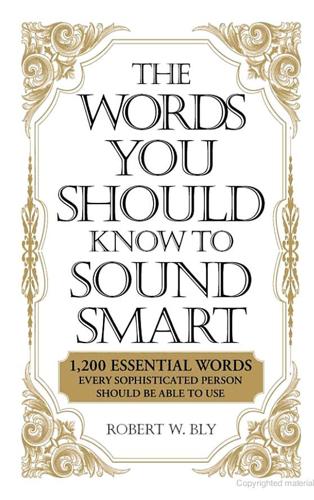
The Words You Should Know to Sound Smart: 1200 Essential Words Every Sophisticated Person Should Be Able to Use
by
Bobbi Bly
Published 18 Mar 2009
This year’s Parisian couture is distinguished by its use of highly TACTILE fabrics. tangential (tan-JEHN-shull), adjective Divergent or digressive; having little to do with the subject or matter at hand. “New York is full of people … with a feeling for the TANGENTIAL adventure, the risky adventure, the interlude that’s not likely to end in any double-ring ceremony.” – Joan Didion, American journalist tantamount (TAN-tuh-mount), adjective Equivalent in value or effect. Eleanor considered our snub of her TANTAMOUNT to betrayal and, in truth, she was correct. tantric (TAN-trik), adjective Anything related to the school of thought that views sex as a sacred and deeply spiritual act.
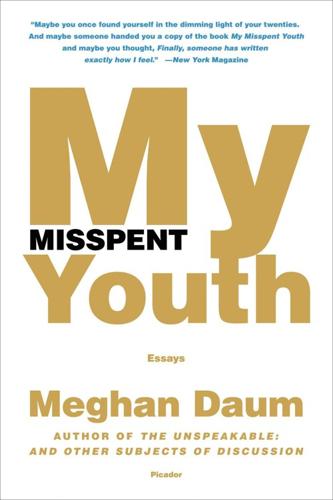
My Misspent Youth: Essays
by
Meghan Daum
Published 2 Mar 2001
—Bruce Jay Friedman “For a collection this smart, assured, and unpredictable, Daum should get time off in purgatory and a start-up grant on her next incarnation as well … She is never less than original in her observations, and never less than honest in her self-examination. Brave words from a brave writer.” —Flaunt “A Joan Didion for the new millennium, Meghan Daum brings grace, wit, and insight to contemporary life, love, manners, and money. Her ‘misspent youth’ is a reader’s delight.” —Dan Wakefield, author of New York in the Fifties “Meghan Daum has the true essayist’s gift: she will say what no one else is willing to say (about being a shiksa, about leaving New York, about being unable to grieve), and through her eloquent and vivid candor she embodies for the reader nothing less than what it feels like to be alive in America right now.”

What Technology Wants
by
Kevin Kelly
Published 14 Jul 2010
The planet itself seemed less impressive, in its old-fashioned, deliberate, annual or daily revolution, than this huge wheel, revolving within an arm’s-length at some vertiginous speed, and barely murmuring—scarcely humming an audible warning to stand a hair’s-breadth further for respect of power—while it would not wake the baby lying close against its frame. Before the end, one began to pray to it. Almost 70 years later California writer Joan Didion made a pilgrimage to the Hoover Dam, a trip she recounts in her anthology, The White Album. She, too, felt the heart of a dynamo. Since the afternoon in 1967 when I first saw Hoover Dam, its image has never been entirely absent from my inner eye. I will be talking to someone in Los Angeles, say, or New York, and suddenly the dam will materialize, its pristine concave face gleaming white against the harsh rusts and taupes and mauves of that rock canyon hundreds or thousands of miles from where I am. . . .
…
Washington, D.C.: Island Press. 319 Ergonomic Scissors: Generic tailor’s scissors, unknown origin. 320 one began to pray to it: Langdon Winner. (1977) Autonomous Technology: Technics-Out-of-Control as a Theme in Political Thought. Cambridge, MA: MIT Press, p. 44. 321 to a world where no one is: Joan Didion. (1990). The White Album. New York: Macmillan, p. 198. 322 “passion and utility” of clocks snag some: Mark Dow. (June 8, 2009) “A Beautiful Description of Technophilia [Weblog comment].” Technophilia. The Technium. http://www.kk.org/thetechnium/archives/2009/06/technophilia.php#comments. 322 “we love the objects we think with”: Sherry Turkle. (2007) Evocative Objects: Things We Think With.
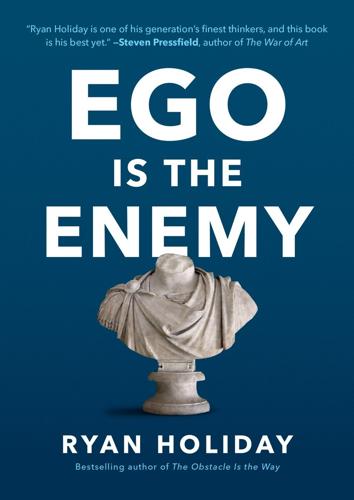
Ego Is the Enemy
by
Ryan Holiday
Published 13 Jun 2016
It would make sense to stop here to avoid belaboring the issue—but that would risk skipping Hughes’s egregious tax fraud; the plane crashes and fatal car accidents; the millions he wasted on private investigators, lawyers, contracts for starlets he refused to let act, property he never lived in; the fact that the only thing that got him to behave responsibly was the threat of public exposure; the paranoia, racism, and bullying; the failed marriages; the drug addiction; and dozens of other ventures and businesses he mismanaged. “That we have made a hero out of Howard Hughes,” a young Joan Didion wrote, “tells us something interesting about ourselves.” She’s absolutely right. For Howard Hughes, despite his reputation, was quite possibly one of the worst businessmen of the twentieth century. Usually a bad businessman fails and ceases to be in business anymore, making it hard to see what truly caused his failures.
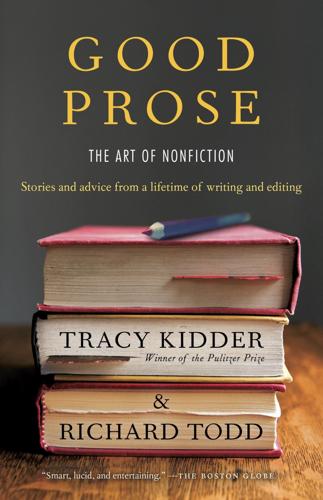
Good Prose: The Art of Nonfiction
by
Tracy Kidder
and
Richard Todd
Published 15 Jan 2013
In “Castro’s Beard,” Jeff Porter interweaves his boyhood with Cold War events that were happening simultaneously but outside his consciousness. An account of the Soviet ships approaching Cuba with a complement of missiles is followed without transition by a paragraph taking us to a Little League game: “In the top of the third inning I am hit by a pitch.” In much of her work, Joan Didion uses the first person as a tuning fork, to pick up the vibrations of an age. Her essay “The White Album” is redolent of the social confusion of the 1960s, and a perfect example of the first person as an authenticator of experience. One passage begins with a psychiatric report: “a personality in process of deterioration with abundant signs of failing defenses and increasing inability of the ego to mediate the world of reality and to cope with normal stress.”
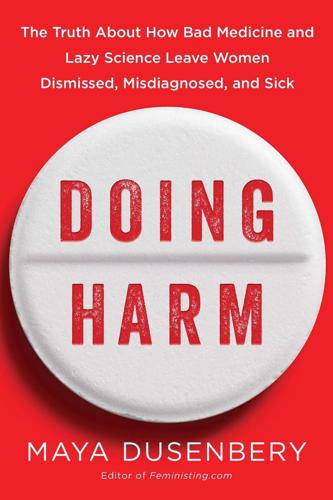
Doing Harm: The Truth About How Bad Medicine and Lazy Science Leave Women Dismissed, Misdiagnosed, and Sick
by
Maya Dusenbery
Published 6 Mar 2018
And it’s estimated that 2.4 to 7.1 million Americans have chronic migraine, in which the headaches gradually become more frequent until they are occurring at least fifteen days a month for three months in a row. That’s a lot of people who spend at least half their days often unable to work, sleep, or sometimes even get out of bed. The pain of a migraine, which typically lasts between four and seventy-two hours, can be unimaginably bad. According to writer and migraine sufferer Joan Didion, “That no one dies of migraine seems, to someone deep into an attack, an ambiguous blessing.” Cindy McCain famously said she could imagine her husband Senator John McCain’s experience of torture in Vietnam because the “unbearable” pain of a migraine “may come close,” a comparison the senator didn’t dispute.
…
Migraine Research Foundation, “Migraine Facts,” https://migraineresearchfoundation.org/about-migraine/migraine-facts/. And it’s estimated that 2.4 to 7.1 million Americans have chronic migraine . . . Joanna Kempner, Not Tonight: Migraine and the Politics of Gender and Health (Chicago: The Univ. of Chicago Press, 2014). “That no one dies of migraine seems, to someone deep into an attack . . . Joan Didion, The White Album: Essays (New York: Farrar, Straus and Giroux, 2009), 171. Cindy McCain famously said she could imagine her husband Senator . . . Liz McNeil, “Cindy McCain’s Secret Struggle with Migraines,” People, September 2, 2006, http://people.com/celebrity/cindy-mccains-secret-struggle-with-migraines/.

The Stack: On Software and Sovereignty
by
Benjamin H. Bratton
Published 19 Feb 2016
This massive mutual prostheticization (a form of nested parasitism, even) takes time to arrive, and the mediatization of the automotive experience did not arrive recently. Many years ago, I jotted down these notes while stuck in a particularly slow traffic jam: Sitting in traffic on a Los Angeles freeway, I am reminded of Joan Didion's revelation that this trap is the most authentic Angeleno social experience. We are not going to any place, all lined up behind our windshields, we are all already there.49 Today, bumper to bumper, we are now all also talking to ourselves, taking meetings, texting, emailing, Googling, checking on this and that, editing essays on our phones.
…
See Intuitive Surgical, “Da Vinci … Changing the Experience of Surgery,” Da Vinci Surgery, December 2013, http://www.davincisurgery.com/; K. Grant, “MDARS: Multiple Robot Host Architecture,” SPAWAR, July 10, 1995, http://users.isr.ist.utl.pt/~jseq/ResearchAtelier/misc/MDARS%20Multiple%20Robot%20Host%20Architecture.htm. 49. Interview with Joan Didion in Shotgun Freeway: Drives through Lost L.A., directed by Morgan Neville and Harry Pallenberg (King Pictures, 1995). 50. Reyner Banham Loves Los Angeles, directed by Reyner Banham (1972). 51. Benjamin H. Bratton, “iPhone City (v.2008),” in Digital Cities AD: Architectural Design 79, no. 4 (2009): 90–97. 52.
…
To speak of the Angeleno condition, its precipice, in the dystopian vernacular is not a critical stance; it is the party line (or more precisely, the oscillation between the utopian and the dystopian, back again, over again, in and out, one through the other, both occupying the same place and plot). The Tyrell Corporation and Rand Corporation, Reyner Banham and Darby Crash, Squeaky Fromme and Ryan Seacrest. Joan Didion's self-driving Google car and Gregory Ain's gated community project in Calabasas. Philip K. Dick's spec screenplay for the Farmville movie, and Rene Daalder and Rem Koolhaas's 1974 screenplay about computer-generated actors and digital films taking over Hollywood. Diller, Scofidio & Renfro's use of proprietary film script analysis and focus group testing algorithms ported into Grasshopper to simulate crowd flow at the Broad Museum, and blockchain–based digital object identifier infrastructure linking Disney's DRM copy protection to Prism.

Another Great Day at Sea: Life Aboard the USS George H.W. Bush
by
Geoff Dyer
Published 19 May 2014
We snuck out. 10 I was always self-conscious on the boat, never felt like I was blending in. The crew members were too busy with their long shifts, their chow and everything else that occupied their crowded days to pay me any mind, but I felt as though I stuck out like a hitchhiker’s thumb. I kept circling back to Joan Didion’s sly declaration of her advantages as a reporter in Slouching Towards Bethlehem, one of which was that she was ‘so physically small’ that people forgot all about her. I, on the other hand, was probably the tallest, thinnest—and, to my chagrin, oldest—person on the boat. I was forever in the way, constantly saying ‘Sorry’ and ‘Excuse me’ and generally gangling around the place, never more conspicuous than when I was attempting to lurk unseen on the edges of the gym, like Peter Crouch looming into the penalty box.

Slouching Towards Bethlehem
by
Joan Didion
Published 1 Jan 1968
Joan Didion Slouching Towards Bethlehem 1968 For Quintana Turning and turning in the widening gyre The falcon cannot hear the falconer; Things fall apart; the center cannot hold; Mere anarchy is loosed upon the world, The blood-dimmed tide is loosed, and everywhere The ceremony of innocence is drowned; The best lack all conviction, while the worst Are full of passionate intensity. Surely some revelation is at hand; Surely the Second Coming is at hand. The Second Coming! Hardly are those words out When a vast image out of Spiritus Mundi Troubles my sight: somewhere in the sands of the desert A shape with lion body and the head of a man, A gaze blank and pitiless as the sun, Is moving its slow thighs, while all about it Reel shadows of the indignant desert birds.
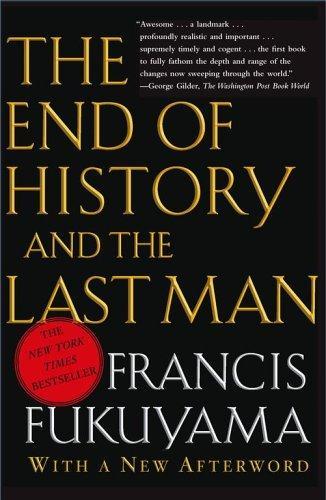
The end of history and the last man
by
Francis Fukuyama
Published 28 Feb 2006
This rather humble form of thymos can be thought of as a feeling of self-respect, or, in currently fashionable language, “self-esteem.” It is possessed to a greater or lesser degree by virtually all human beings. Having a modest sense of self-respect seems to be important to everybody, important to their ability to function in the world and the satisfaction they feel with their lives. It is, according to Joan Didion, what enables us to say “no” to other people without self-reproach.2 The existence of a moral dimension in the human personality that constantly evaluates both the self and others does not, however, mean that there will be any agreement on the substantive content of morality. In a world of thymotic moral selves, they will be constantly disagreeing and arguing and growing angry with one another over a host of questions, large and small.
…
See particularly part 3, chapters 4-6. 6 For empirical documentation of this phenomenon, see Huntington (1968), pp. 40-47. 7 Lincoln’s reference to his belief in a just God, however, raises the question of whether the greatest acts of thymotic self-overcoming need to be supported by belief in God. 8 There is an economic or sociological context to the abortion issue insofar as the proponents and opponents tend to be grouped according to education, income level, whether they are urban or rural, etc., but the substance of the debate concerns rights, not economics. 9 The Romanian case is a complicated one because there is evidence that the Timisoara demonstrations were not entirely spontaneous, and that the uprising had been planned in advance by the military. 10 See, for example, “East German VIPs Now under Attack for Living High Off Party Privileges,” Wall Street Journal (November 22, 1989), p. A6. Chapter 17. The Rise and Fall of Thymos 1 Nietzsche, Twilight of the Idols and the Antichrist (London: Penguin Books, 1968a), p. 23. 2 See Joan Didion’s short but brilliant essay on this subject, “On Self-Respect,” in Didion, Slouching Towards Bethlehem (New York: Dell, 1968), pp. 142-148. 3 Aristotle discusses thymos under the rubric of “greatness of soul” (megalopsychia) or magnanimity, which for him is the central human virtue. The great souled man “claims much and deserves much” with respect to honor, the greatest of all external goods, and in doing so observes a mean between vanity on the one hand (claiming much and deserving little) and smallness of soul (claiming little and deserving much).
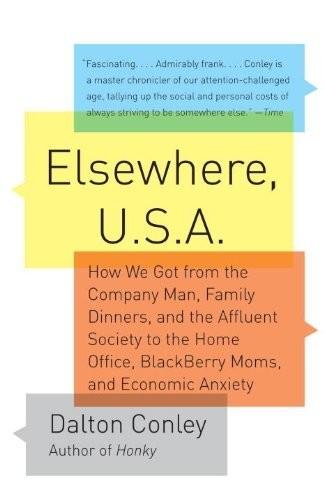
Elsewhere, U.S.A: How We Got From the Company Man, Family Dinners, and the Affluent Society to the Home Office, BlackBerry Moms,and Economic Anxiety
by
Dalton Conley
Published 27 Dec 2008
But as wonderful as it is to have a computer recommend a sleeper film that even the slacker clerks at my neighborhood video store wouldn’t be able to name, there is a subtle cost to this form of knowledge diffusion. If Amazon had told me that “other white men between ages 35 and 45” also bought Ian McEwan’s latest novel and Joan Didion’s memoir, I might find it offensive. As modernists, we don’t take well to the salience of ascriptive categories. They feel reductive and demeaning of our individuality. If Amazon instead said, “Professors and social scientists who enjoy travel and live in urbanized settings” also enjoyed The End of Poverty by Jeffrey Sachs, then we might find it a little strange as well, even though it’s based on my achieved—or affiliational—characteristics.
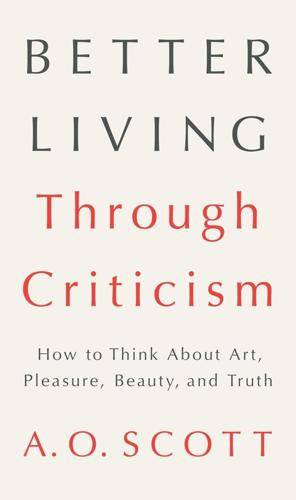
Better Living Through Criticism: How to Think About Art, Pleasure, Beauty, and Truth
by
A. O. Scott
Published 9 Feb 2016
If not role models, then secret idols and alter egos. But why did I have to stay within that range? To stick with my own supposed kind? Q: Because it’s greedy otherwise, in the way that some of those guys were greedy. You couldn’t be content with wanting to be Jack Kerouac or Bob Dylan or Johnny Rotten or Spider-Man. You had to want to be Joan Didion and Patti Smith and Leadbelly. A: First of all, it was no small leap to imagine myself as Kerouac or Dylan. It’s not as if I really had anything in common with them, apart from some demographic traits shared by a few million others as well. Second of all, one of the ways Patti Smith got to be Patti Smith was by wanting to be Bob Dylan—and also Rimbaud and a lot of other guys.

Not That Kind of Girl: A Young Woman Tells You What She's "Learned"
by
Lena Dunham
Published 28 Sep 2014
There is a common superstition that “self-respect” is a kind of charm against snakes, something that keeps those who have it locked in some unblighted Eden, out of strange beds, ambivalent conversations, and trouble in general. It does not at all. It has nothing to do with the face of things, but concerns instead a separate peace, a private reconciliation. —JOAN DIDION, “On Self-Respect”1 I always run into strong women who are looking for weak men to dominate them. —ANDY WARHOL I’VE ALWAYS BEEN ATTRACTED to jerks. They range from sassy weirdos who are ultimately pretty good guys to sociopathic sex addicts, but the common denominator is a bad attitude upon first meeting and a desire to teach me a lesson.
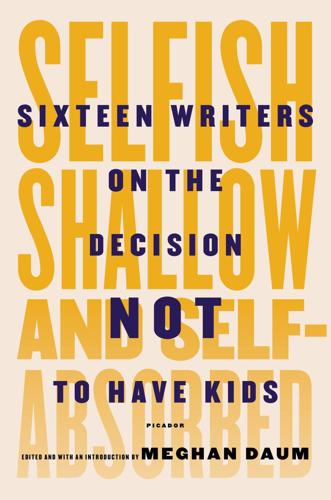
Selfish, Shallow, and Self-Absorbed: Sixteen Writers on the Decision Not to Have Kids
by
Meghan Daum
Published 29 Mar 2015
Not nearly as much as I should have. Not enough to understand the debt of gratitude I owed to the women who had come before me. But what is perhaps even more unsettling is my dawning understanding that because I came of age right on the heels of Roe v. Wade, of Gloria Steinem and Adrienne Rich, of Joan Didion and Alice Munro, it might have been more okay for me not to have children than it is for the women I met at Butler University. Maybe my generation had the distinct advantage of watching our own mothers see on the horizon the choices that would soon be available to women, only to realize how half buried they already were in the quicksand of overbearing husbands and carpool commitments and the Junior League.
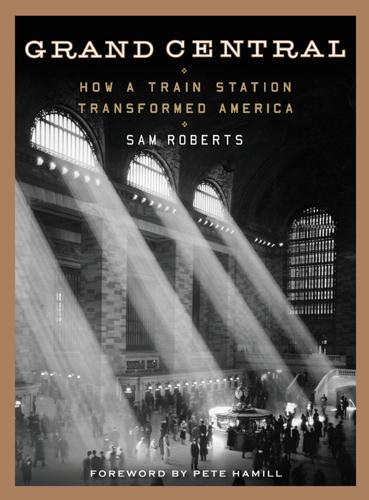
Grand Central: How a Train Station Transformed America
by
Sam Roberts
Published 22 Jan 2013
One way a generation of Americans heard about it was through the popular radio soap opera on NBC Grand Central Station, which was broadcast nationally from 1937 to 1953. “To those of us who came from places where no one had heard of Lester Lanin and Grand Central Station was a Saturday radio program,” Joan Didion wrote, “where Wall Street and Fifth Avenue and Madison Avenue were not places at all but abstractions (‘Money,’ and ‘High Fashion.’ And ‘The Hucksters’). New York was no mere city. It was instead an infinitely romantic notion, the mysterious nexus of all love and money and power, the shining and perishable dream itself.”
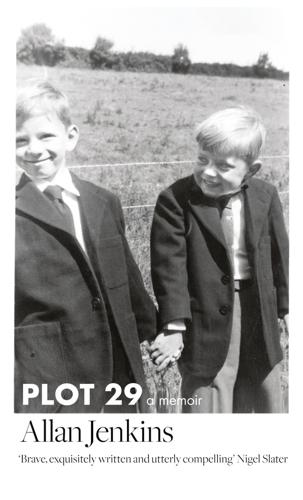
Plot 29: A Memoir
by
Allan Jenkins
Published 15 Mar 2017
There is red wine in tin cups and a chocolate bar for pudding. The women talk about growing food, late autumn, sickness. Mary says the allotment is healing her, I say I feel it too. We share the last sausages. We empty the wine, I bask in the last of the sun and their company. December We tell ourselves stories in order to live … Joan Didion, The White Album DECEMBER 2. The first session of a new series with the shrink. People talk of their ‘inner child’ as though he or she is a gurgling toddler, natural, like entering Narnia. But what if he or she is a frightened thing, anxious to escape? Sometimes his anger engulfs me: I rage with his voice like in The Exorcist.
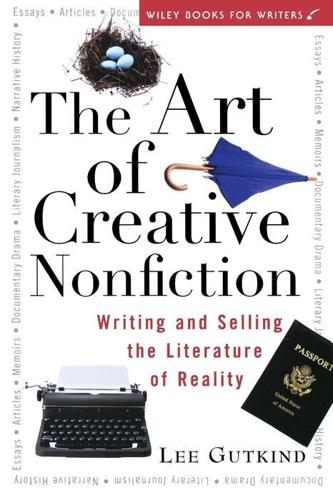
Art of Creative Nonfiction: Writing and Selling the Literature of Reality
by
Lee Gutkind
and
Purba
Published 1 Jan 1997
Box 81536 Pittsburgh, PA 15217 Page 157 Helpful Information Creative Nonfiction Reading List: A Random Recommended Selection of Books and Authors to Sample and Enjoy, from the Editors of the Journal Creative Nonfiction: Anthologies The Art of the Personal Essay, with an introduction by Philip Lopate Best American Essays, edited by Robert Atwan The Creative Nonfiction Reader, edited by Lee Gutkind The John McPhee Reader, with an introduction by William Haworth The Second John McPhee Reader, with an introduction by David Remnick Suggested Books and Authors Desert Solitaire, Edward Abbey Remembering Heaven's Face, John Balaban Loving Rachel, Jane Bernstein Bringing the Heat, Mark Bowden Friendly Fire, C. D. B. Bryan The Corpse Had a Familiar Face, Edna Buchanan In Cold Blood, Truman Capote The White Album, Joan Didion Pilgrim at Tinker Creek, Annie Dillard This House of Sky, Ivan Doig The Broken Cord, Michael Dorris The Studio, John Gregory Dunne The Great Plains, Ian Frasier Page 158 Appendix 4 The Last Shot, Darcy Frey Colored People, Henry Louis Gates The Shadow Man, Mary Gordon Stuck in Time, Lee Gutkind Blue Highways, William Least Heat Moon Dispatches, Michael Herr All Creatures Great and Small, James Herriot Hiroshima, John Hersey Far-Flung Hubbell, Sue Hubbell Liar's Club, Mary Karr House, Tracy Kidder Not Necessarily a Benign Procedure, Perri Klass There Are No Children Here, Alex Kotlowitz Cowboy, Jane Kramer Invasive Procedures, Mark Kramer The Balloon Lady and Other People I Know, Jeanne Marie Laskas Hunting the Whole Way Home, Sidney Lea Arctic Dreams, Barry Lopez Common Ground, J.
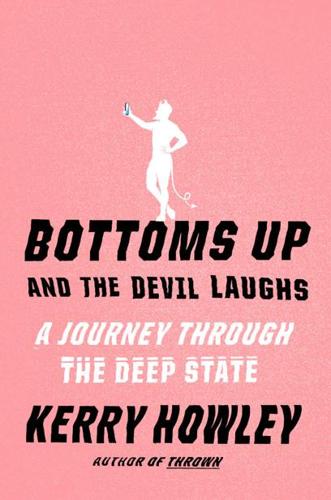
Bottoms Up and the Devil Laughs
by
Kerry Howley
Published 21 Mar 2023
This stopped me, being both obviously correct and so contrary to the force of my thinking a moment previous. We had presumed a right to see inside each compound. We had all of us turned an aesthetic preference into a morality. Or maybe it was that we had neutered a dark kind of morality into an aesthetic preference. Joan Didion has praised the kind of home in which “you can close the door and cry until dinner,” which is to say, an architecture not so enamored by openness that it has failed to involve rooms. I kept this in mind as my husband and I were house shopping a few years ago. “Is this a house I can cry alone in?”
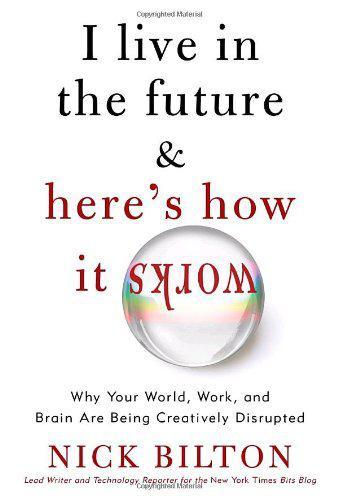
I Live in the Future & Here's How It Works: Why Your World, Work, and Brain Are Being Creatively Disrupted
by
Nick Bilton
Published 13 Sep 2010
But it’s central to understanding what has changed and what the future might look like. In the aftermath of the gory and devastating World War I, the poet William Butler Yeats wrote, Things fall apart; the centre cannot hold; Mere anarchy is loosed upon the world. A couple of generations later, the writer Joan Didion surveyed the social revolution of the 1960s and wrote, “The center was not holding.” In the middle of a painful technology and information revolution, the publishers, producers, and purveyors of traditional media may well feel the same way, that the center has dropped out altogether and a kind of digital anarchy reigns.
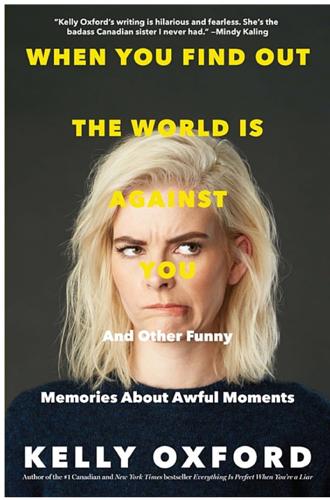
When You Find Out the World Is Against You: And Other Funny Memories About Awful Moments
by
Kelly Oxford
Published 17 Apr 2017
With Sal, lately, a lot of conversations involve a line of questioning, such as, “Who do you think is hotter? _____ or _____?” and then she texts her friends my answers. Her friends have dozens of snapchats of me saying, “I don’t think Harry Styles is hot, I’m not a pedophile.” Which is a lie, he’s hot. But isn’t it worse if I tell her that I think he’s hot? I’d rather talk to Sal about Joan Didion or how I think Monica Lewinsky got the rawest of deals. But I’ve tried those topics, and similar ones, and she doesn’t seem as interested in those as she is in my attraction to Harry Styles. Yeah, maybe I do have something to worry about. I’m an idiot. I turn left off Moorpark and into the flat, desperate parking lot in front of Pizza Guy and text Sal, “I’m here.”

But What if We're Wrong? Thinking About the Present as if It Were the Past
by
Chuck Klosterman
Published 6 Jun 2016
Max published his posthumous biography of David Foster Wallace, it was depressing to discover that many of the most memorable, electrifying anecdotes from Wallace’s nonfiction were total fabrications. Of course, that accusation would be true for countless essays published before the fact-checking escalation of the Internet. The defining works of Joseph Mitchell, Joan Didion, and Hunter Thompson all contain moments of photographic detail that would never withstand the modern verification process51—we’ve just collectively decided to accept the so-called larger truth and ignore the parts that skew implausible. In other words, people who don’t know better are often wrong by accident, and people who do know better are sometimes wrong on purpose—and whenever a modern news story explodes, everyone recognizes that possibility.
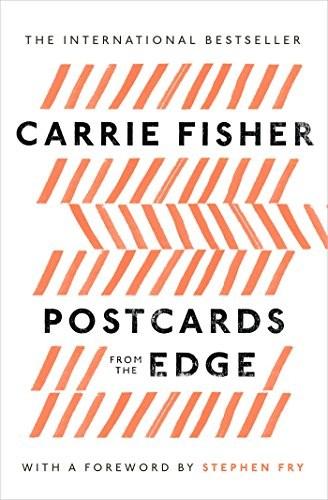
Postcards From the Edge
by
Carrie Fisher
Published 10 Nov 2011
—Jackie Collins “The sort of novel that makes you want to call your friends to read passages out loud.” —Women’s Wear Daily “Searingly funny.” —Vogue “An accurately sardonic, wonderfully detailed novel.” —New York Daily News “A single woman’s answer to Nora Ephron’s Heartburn, a less-sexual version of Erica Jong’s Fear of Flying, the smart successor to Joan Didion’s Play It as It Lays.” —Los Angeles Times “Postcards from the Edge percolates with a wry sense of self-deprecating humor that keeps Suzanne and the reader moving in the right direction. . . . An entertaining, thoughtful novel about insecurities not found exclusively in Hollywood.” —Nashville Tennessean “Carrie Fisher has a unique and startling voice. . . .
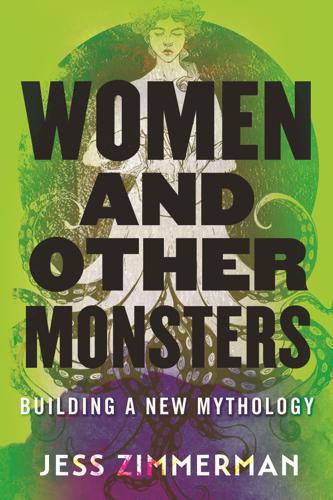
Women and Other Monsters: Building a New Mythology
by
Jess Zimmerman
Published 9 Mar 2021
Perhaps some unconscious part of me believes Helena and I are in contention for a closely guarded single slot. Like if we keep climbing, and outdoing all challengers, and absorbing each other’s life force, we’ll eventually achieve the level of “woman essayist men talk about to prove they’ve read a woman essayist.” There can be only one Joan Didion. Even more than competition against other women, though, our paradoxical conflict with the people we most admire comes from the way all women are pitted against an ideal. Other women’s success on those metrics feels like a referendum, in a way men’s success does not. “She’s perfect and I ducking hate her” is shorthand for “I’m not perfect and I ducking hate myself.”

The Great Wave: The Era of Radical Disruption and the Rise of the Outsider
by
Michiko Kakutani
Published 20 Feb 2024
It was a state of affairs, he added with a touch of glee, that opened the way for the sort of narrative nonfiction that became known as “the New Journalism,” which borrowed storytelling methods from the old-fashioned novel (careful scene construction, lots of overheard dialogue, and pictorial descriptions with plenty of “status details”) and which was practiced by the likes of himself, Joan Didion, Norman Mailer, and Gay Talese. In a 1961 essay, Philip Roth wrote that there had been a “voluntary withdrawal of interest by the writer of fiction from some of the grander social and political phenomena of our times.” The reason, he explained, was that American reality had become “so fantastic, so weird and astonishing” that it could outdo the novelist’s “own meager imagination” on a nearly daily basis.
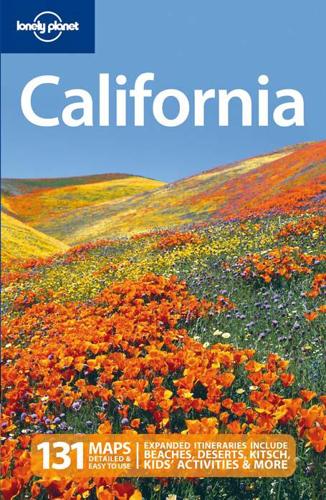
California
by
Sara Benson
Published 15 Oct 2010
Return to beginning of chapter TRAVEL LITERATURE The passionate writings of naturalist John Muir (1838–1914) provide reading material for half a lifetime. Dip into his canon with The Wild Muir: 22 of John Muir’s Greatest Adventures, compiled by Lee Stetson, with rustic woodcut illustrations by Fiona King. In Where I Was From, Joan Didion’s ruminations on California shatter palm-fringed fantasies as she skewers the rancidly rich, their violence and shallowness while describing her pioneering family’s history on this warped shore. Bill Barich’s Big Dreams: Into the Heart of California amusingly narrates an ultimately heartbreaking trip from the Oregon border down Mexico way, searching for the elusive American Dream that so many California immigrants fail to find.
…
Tales of the City (Armistead Maupin) This 1976 romp follows San Francisco characters: pot-growing landladies, ever-hopeful Castro club-goers, and titillated Midwestern arrivals. Woman Warrior: Memoirs of a Girlhood Among Ghosts (Maxine Hong Kingston) A memoir of growing up Chinese American in Stockton, reflecting the shattered mirror of Californian identity. Slouching Towards Bethlehem (Joan Didion) These 1968 essays burn through the hippie haze to reveal glassy-eyed teenage revolutionaries adrift in the summer of love. The Electric Kool-Aid Acid Test (Tom Wolfe) Follow Ken Kesey, the Merry Pranksters, the Grateful Dead and Hell’s Angels as they tune in, turn on and drop out. The Man in the High Castle (Philip K Dick) The bestselling Berkeley sci-fi writer presents the ultimate what-if scenario: imagine San Francisco circa 1962 if Japan and Nazi Germany had won WWII.
…
Photography buffs plan California vacations around two of the world’s finest photography collections: the SFMOMA Click here, whose superb collection runs from early Western daguerreotypes to experimental postwar Japanese photography, and the Getty Center, which has become the Louvre of photography with over 31,000 photographs in a newly expanded wing. * * * Timeless, rare Ansel Adams photographs are paired with excerpts from canonical Californian writers such as Jack Kerouac and Joan Didion in California: With Classic California Writings, edited by Andrea G Stillman. * * * As the postwar golden west became crisscrossed with freeways and divided into planned communities, Californian painters captured the abstract forms of manufactured landscapes on canvas. In San Francisco Richard Diebenkorn, Clyfford Still and David Park became leading proponents of Bay Area Figurative Art, while San Francisco sculptor Richard Serra captured port-town aesthetics in massive, rusting monoliths resembling ship prows and industrial Stonehenges.
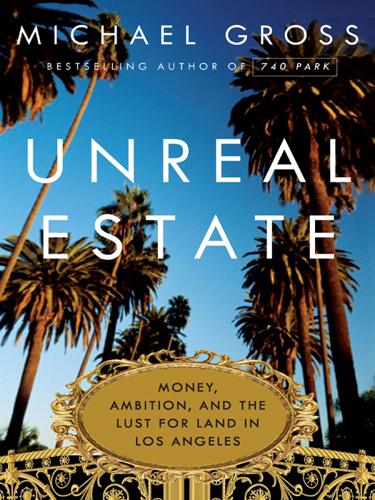
Unreal Estate: Money, Ambition, and the Lust for Land in Los Angeles
by
Michael Gross
Published 1 Nov 2011
The wildly successful television producer Aaron Spelling and his wife Candy bought the property in the early eighties for a reported $10.25 million, along with an adjacent lot, at the suggestion of Marvin and Barbara Davis (both couples were eyeing The Knoll at the time). Its demolition, called a tear-down in Los Angeles, and replacement by a $55 million W-shaped, 56,500-square-foot behemoth that the Spellings called The Manor, complete with bowling alley and beauty salon, was memorialized in The New Yorker by Joan Didion, the most edgy and erudite observer of life in the Southland. She wrote that The Manor became “not just a form of popular entertainment but, among inhabitants of a city without much common experience, a unifying, even a political, idea.” While “people who make movies still have most of the status, and believe themselves keepers of the community’s unspoken code—of the rules, say, about what constitutes excess on the housing front,” Didion continued, things had, in fact, changed, a change she compared to “an anomaly in the wheeling of the planets.”
…
Their cast of regulars features Huffington, Hollywood types like David Geffen, Mike Medavoy, Lawrence Bender, Norman Lear, Albert Brooks, Rob Reiner, Michael York, Warren Beatty and Annette Bening, Aaron Sorkin, Yvette Mimieux, Bill Maher, and Larry David and his activist ex-wife Laurie, as well as the writer Gore Vidal and the former financier Michael Milken. “It’s a fuller life when you know, in the same life, Martha Stewart and Jared Diamond, Edgar Doctorow and Joan Didion and Sylvester Stallone,” Lynda said when she was profiled in The New Yorker. Yes, The New Yorker. What attracts them all? “To have dinner at the long table under the huge chandelier in the dining room,” observed the author Amy Wilentz, “is to feel as if one were a part of some kind of modern aristocracy, of an entitled few.
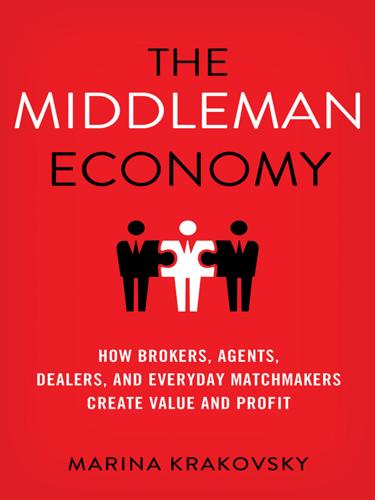
The Middleman Economy: How Brokers, Agents, Dealers, and Everyday Matchmakers Create Value and Profit
by
Marina Krakovsky
Published 14 Sep 2015
These agents pull in the kind of clients who want an agent who’s not only unafraid of public scorn but who’s well-known to team owners and managers for being that way, too. My favorite example of the badass-agent effect comes from the experience of literary agent Lynn Nesbit, whose clients include Jimmy Carter, Michael Crichton, Joan Didion, and Anne Rice. In an interview looking back on her stellar career, Nesbit once said that when she took Tom Wolfe’s first book to auction (rather than letting Wolfe’s editor at New York magazine offer it exclusively to a favored book editor), she incurred the hatred of this influential magazine editor.
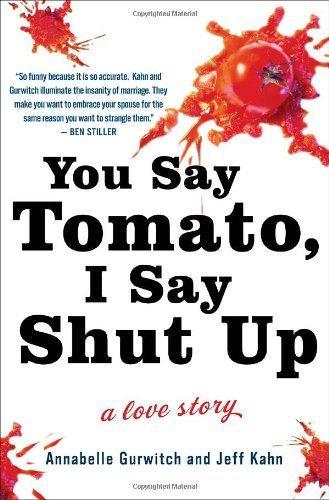
You Say Tomato, I Say Shut Up
by
Annabelle Gurwitch
Published 31 Aug 2010
* Oddly enough, living with in-laws seems to have no negative health benefits for men. Go figure. † Jeff just thinks that Robert DeNiro and Diane Keaton were unavailable. 11 • • • • I’m OK, You’re the Problem “In the early years, you fight because you don’t understand each other. In the later years, you fight because you do.” —JOAN DIDION Socrates is quoted as saying, “The unexamined life is not worth living.” Records of that time suggest he also fought with his wife on a regular basis. Big surprise. She Says Every few months for the first maybe nine years of our marriage, I’d get fed up with how much we argue and try to persuade Jeff to attend couples therapy sessions with me by citing the role of a referee in sports.
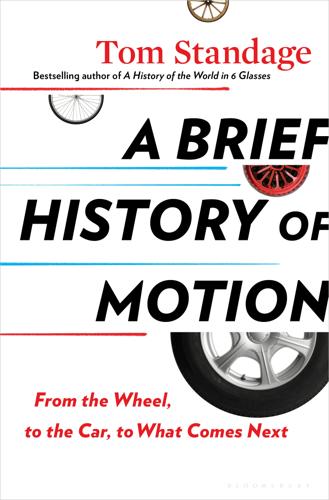
A Brief History of Motion: From the Wheel, to the Car, to What Comes Next
by
Tom Standage
Published 16 Aug 2021
In the words of the American urbanist Lewis Mumford, writing in 1961, suburbia was “a multitude of uniform, unidentifiable houses, lined up inflexibly, at uniform distances, on uniform roads, in a treeless communal waste, inhabited by people of the same class, the same income, the same age group, witnessing the same television performances, eating the same tasteless prefabricated foods, from the same freezers, conforming in every outward and inward respect to a common mold.” Suburbia’s blandness was blamed for loneliness, alienation, and juvenile delinquency. Novels and films depicted a dark reality beneath the veneer of suburban happiness and conformity. In Joan Didion’s novel Play It as It Lays (1970), for example, the female protagonist goes for long drives on the freeways of Southern California to try to alleviate her feeling of disconnection from everyone around her. Versions of these opposing stereotypes about suburbia, born in the 1950s and 1960s, are alive and well today.
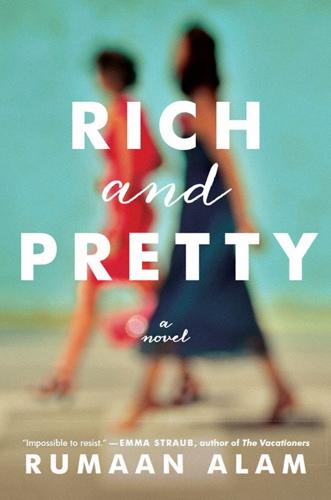
Rich and Pretty: A Novel
by
Rumaan Alam
Published 6 Jun 2016
You didn’t want to get together, or you didn’t remember that you were supposed to or the nuances of the relationships in the group. Two weeks isn’t long enough to read a book, or it can’t be guaranteed. Three weeks is just about right. There’s a page limit on the books they’ll read. They’re on Didion now. It’s fine, but it’s irritating, somehow. Part of Sarah suspects people only like to read Joan Didion because she’s thin and glamorous, or was, anyway. The edition she’s reading has a prominent photo of the author on the cover, looking chic. Sarah’s hosting tonight. It’s good timing. The cleaning lady comes alternate Wednesdays, so it’s only been a day, and the bathroom isn’t covered in errant blond hairs, which proliferate, surprising even her, and the stove gleams.
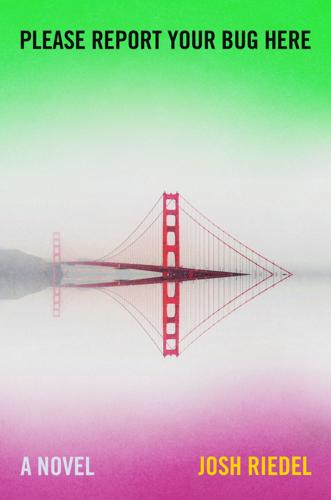
Please Report Your Bug Here: A Novel
by
Josh Riedel
Published 17 Jan 2023
I pretended to be interested in something on my phone, tossed out my container, and walked back to my desk. Noma messaged me her address. Go home after work and be bored all night, turn to page 18. Come over to my place and smoke with me, turn to page 119 Central Ave. * * * Noma lived in the Haight, home of the Grateful Dead, of Janis Joplin and the Summer of Love and Joan Didion. As I climbed Haight Street on my bike, a man with a long gray ponytail and tie-dyed sweatshirt crossed the street without looking. I veered around him. A hookah bar was blasting Jefferson Airplane. Outside a corner store, a guy with an acoustic guitar grumbled out a Bob Dylan song in front of a Bob Marley mural.
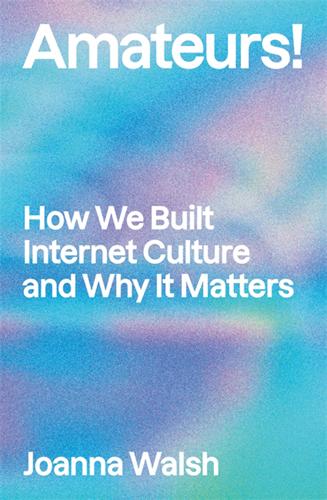
Amateurs!: How We Built Internet Culture and Why It Matters
by
Joanna Walsh
Published 22 Sep 2025
Materialism This page is under construction Environment This page is under construction And on ‘visuals’ Historical, Social, & Regional Context This page is under construction Stages of Life This page is under construction 174Urban/Rural Spectrum This page is under construction Seasons This page is under construction Cynicism vs. Idealism This page is under construction Relationship with Reality This page is under construction 175 2015: In Praise of the Trash Essay We tell ourselves stories in order to live. Joan Didion, The White Album I was at a lecture on the personal essay by a distinguished critic who drew a direct line from the work of Hazlitt through Woolf and Didion to the personal essayists of today. The thread was clear and fine-spun. It seemed to run taut without snags or tangles. But there was something missing.
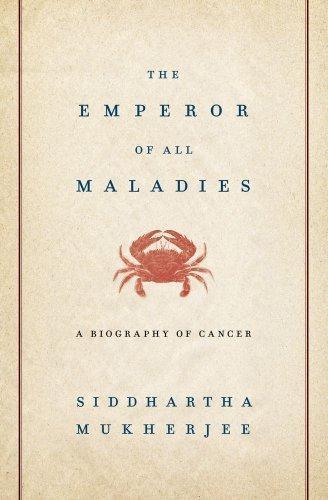
The Emperor of All Maladies: A Biography of Cancer
by
Siddhartha Mukherjee
Published 16 Nov 2010
He apologized for the intrusion, but her decision had troubled him all night. Of all the variants of Her-2 amplification that he had encountered, hers had been truly extraordinary; Bradfield’s tumor was chock-full of Her-2, almost hypnotically drunk on the oncogene. He begged her once again to join his trial. “Survivors look back and see omens, messages they missed,” Joan Didion wrote. For Bradfield, Slamon’s second phone call was an omen that was not missed; something in that conversation pierced through a shield that she had drawn around herself. On a warm August morning in 1992, Bradfield visited Slamon in his clinic at UCLA. He met her in the hallway and led her to a room in the back.
…
Jan Lindsten (Singapore: World Scientific Publishing, 1993). 418 “allergic to cancer”: Merrill Goozner, The $800 Million Pill: The Truth Behind the Cost of New Drugs (Berkeley: University of California Press, 2004), 195. 418 Drained and dejected: Ibid. 418 “Nobody gave a shit”: Bazell, Her-2, 49. 419 “When I was finished with all that”: Ibid. Also Barbara Bradfield, interview with author, July 2008. 419 But there was more river to ford: Ibid. 420 “His tone changed,” she recalled: Ibid. 420 “I was at the end of my road”: Ibid 420 “Survivors look back and see omens”: Joan Didion, The Year of Magical Thinking (New York: Vintage, 2006), 152. 420 On a warm August morning in 1992: Bradfield, interview with author. Details of the trial and the treatment are from Bradfield’s interview, from Bazell’s Her-2, and from Slamon, interview with author, April 2010. Drugs, Bodies, and Proof 423 Dying people don’t have time or energy: “Dying for Compassion,” Breast Cancer Action Newsletter 31 (August 1995). 423 It seemed as if we had: Musa Mayer, Breast Cancer Action Newsletter 80 (February/March 2004). 423 “True success happens”: Breast Cancer Action Newsletter 32 (October 1995). 424 The number of women enrolled in these trials: Robert Bazell, Her-2: The Making of Herceptin, a Revolutionary Treatment for Breast Cancer (New York: Random House, 1998), 160–80. 424 “We do not provide . . . compassionate use”: Ibid., 117. 424 “If you start making exceptions”: Ibid., 127. 424 “Why do women dying of breast cancer”: “Dying for Compassion,” Breast Cancer Action Newsletter. 424 “Scientific uncertainty is no excuse”: Charlotte Brody et al., “Rachel’s Daughters, Searching for the Causes of Breast Cancer: A Light-Saraf-Evans Production Community Action & Resource Guide,” http://www.wmm.com/filmCatalog/study/rachelsdaughters.pdf (accessed January 31, 2010). 424 Marti Nelson, for one, certainly could not: Marti Nelson’s case and its aftermath are described in Bazell, Her-2. 427 On Sunday, May 17: Bruce A.
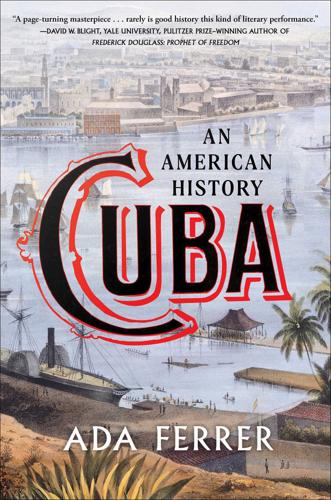
Cuba: An American History
by
Ada Ferrer
Published 6 Sep 2021
Yet others hurled slogans aimed at Fidel Castro: ‘!Abajo Fidel! Death to the tyrant!’ I wanted to cry. This is why I had left Cuba, I thought, so that I would never again have to hear another slogan….”49 She was listening to an uncanny echo, peering through a distorted looking glass. But that feeling—Miami’s cognitive dissonance, as Joan Didion once called it—was not always sinister. Sometimes it was just about family and survival, longing and attachment. So, a young girl in Cuba grows up in a home with a special drawer filled with nice clothes given to her family by relatives in the United States. They were clothes, pressed and never worn, waiting for the day the family would fly to its exile abroad.
…
García, Havana USA, 42. See also Cuban Adjustment Act, http://uscode.house.gov/statutes/pl/89/732.pdf and https://www.uscis.gov/greencard/caa. 18. Jimmy Carter, Presidential Directive/NSC-6, in https://nsarchive2.gwu.edu/news/20020515/cartercuba.pdf; Grenier and Moebius, History of Little Havana, 62–63; Joan Didion, Miami (New York: Simon & Schuster, 1987), 99–101. 19. M. C. García, Havana USA, 47–50; Mirta Ojito, Finding Mañana: A Memoir of a Cuban Exodus (New York: Penguin, 2005), 51. 20. M. C. García, Havana USA, 48–50; Ojito, Finding Mañana, 48–51. 21. M. C. García, Havana USA, 51–52; Ojito, Finding Mañana, 59–60. 22.
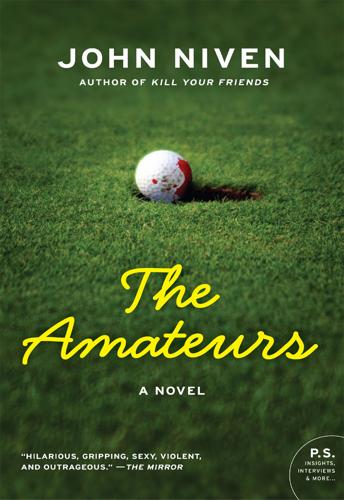
The Amateurs: A Novel
by
John Niven
Published 1 Jan 2009
It takes in information and orchestrates complex behavioural repertoires that allow human beings to act in sometimes marvelous, sometimes terrible ways. From Neurons to Neighborhoods, Jack P. Shonkoff and Deborah A. Phillips (eds) I know why we try to keep the dead alive: we try to keep them alive in order to keep them with us. The Year of Magical Thinking, Joan Didion 14 NORTH AYRSHIRE GENERAL HOSPITAL, BUILT IN THE early 1980s, is a sprawling structure of white and chocolate that sits less than ten miles to the east of Ardgirvan, just on the outskirts of the larger town of Kilmarnock. NADGE, as the locals call it, was not a place of fond memories for Cathy Irvine.
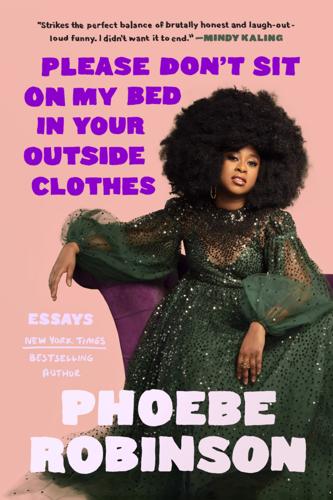
Please Don't Sit on My Bed in Your Outside Clothes: Essays
by
Phoebe Robinson
Published 14 Oct 2021
Yes, I’m aware 1) of the whiplash that just occurred from that segue, and 2) that the previous sentence is as down-to-earth as when, in the middle of the 2020 quar, Martha Stewart posted on Instagram about the summer house (built in 1776) on her farm that she converted into a library for her book collection. You know, I bet if the enslaved people who most likely constructed this home knew that it would one day only house, among other books, Joan Didion’s entire oeuvre, some Glennon Doyle self-help, and a first edition One Fish, Two Fish, Red Fish, Blue Fish for Stewart’s grandkids to read, the slaves would have surely screamed, “WORTH IT!” In all seriousness, while most of us are just hoping to one day afford a home that will house our bodies, M.

Sorrow and Bliss
by
Meg Mason
Published 1 Sep 2020
Except the section where the husband – who is blond in real life and unmurdered – decides to relocate his expensive coffee machine to another part of the kitchen and when he picks it up, brown water from the collection tray cascades down the front of his white jeans. That scene and every other seemed to vibrate with brilliance and humour as I typed them. The next day they read like the work of a fifteen-year-old with encouraging parents. Altogether, I could see how much it lurched in style towards whatever I was reading at the time. A confusing mix of Joan Didion, dystopic fiction and an Independent columnist who was serialising her divorce. I gave up and started reading large-print romance until I realised I had made friends with the elderly contingent who also spent their days in the silent area because, by the time they invited me to lunch at The Crepe Factory, it did not seem remarkable that I said yes

Life After Google: The Fall of Big Data and the Rise of the Blockchain Economy
by
George Gilder
Published 16 Jul 2018
You traipse from one website to another, lonely in the cloud, joined but not jostled by an unseen throng. They are visiting the same pages at the same time, reading the same news, watching the same performers. Invisibly they share your interest in trail races or tax rates or Leonard Cohen or Information Theory or track and field or Joan Didion or network processors or March Madness or Art Tatum or beautiful women or Yo-Yo Ma or the Federal Communications Commission or mountain scenery or the blockchain. The throngs are with you but unreachably apart. Most of the time you are uninterested in the others. But from time to time, wouldn’t it be gratifying to find kindred voices on the Web?
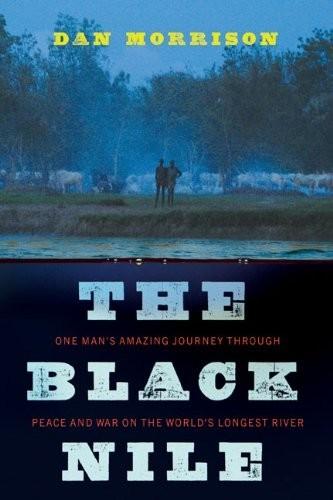
The Black Nile: One Man's Amazing Journey Through Peace and War on the World's Longest River
by
Dan Morrison
Published 11 Aug 2010
A mile into this triumphant march I had sweated dark bands through my tan travel shirt and green construction pants and was lurching with every step under two packs. Cutting three bags down to two was an achievement if you were flying coach to Phoenix, but it didn’t mean dick while trekking in the Sudan. Despite all the lessons of my first three months on the Nile, I was still overweight and understrong. Were all those bungee cords necessary? Was Joan Didion’s Slouching Towards Bethlehem really crying out to come along? Four flip-flopped boys in rough sweatshirts and wide, frayed dungarees shouted from the road as they bobbed past on a wooden flatbed cart. I took two heavy bounds and jumped on, landing almost neatly on my hip. The gray-patched donkey slowed for a couple paces and then adjusted without protest to its new cargo, yanking us along the slippery road and into Malakal’s late-morning scrum of minibuses, camels, motorcycles, asses and Land Cruisers.
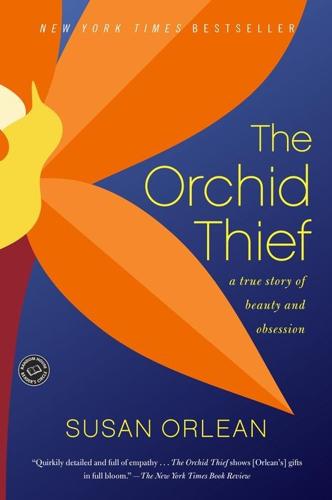
The Orchid Thief: A True Story of Beauty and Obsession
by
Susan Orlean
Published 1 Jan 1998
In honor of Elizabeth Taylor, the chairwoman of the American Orchid Society’s seventy-fifth anniversary gala, there is a Laelia anceps cultivar named ‘Elizabeth’s Eyes.’ The ‘Jackie Kennedy’ orchid is snow-white with purple trim; the ‘Richard Nixon’ is the color of putty with brown speckles. There is a ‘Nancy Reagan’ orchid and an orchid hybrid named for the daughter of writer Joan Didion and an orchid hybrid named Rajah’s Ruby ‘Babe’s Baby,’ named by Brooklyn Dodger Babe Herman, who bred it. An Illinois orchid breeder named a new Phalaenopsis hybrid after Shinichi Suzuki, the Japanese violinist who developed a method for teaching music to tiny children. I met many people in Florida who had orchids named for them by Florida nurserymen Bob Fuchs and Martin Motes.
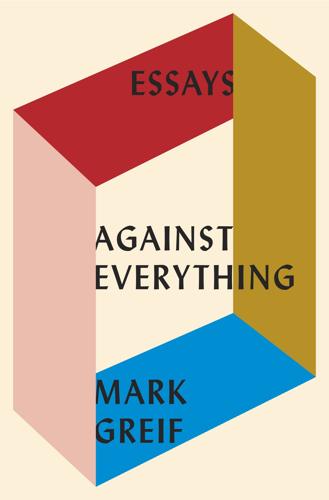
Against Everything: Essays
by
Mark Greif
Published 5 Sep 2016
Yet Madoff was on my front page every day and my news broadcast at night. Then, following Madoff, we had Octomom. — I don’t mean to suggest that Nadya Suleman isn’t a loon, or a wrongdoer. She clearly belongs to the tradition of the great American wrecks. Sweet, self-serving, at once devious and oblivious, she seems an inheritor of Joan Didion’s California “dreamers of the golden dream,” who can remake reality by sheer force of their denial of contradictions, practicalities, and other people’s eventual suffering. But the press followed sun-kissed Nadya into its own inner California—a land of editorials that write themselves and immoral behavior everyone can hate—without squinting to see what lay beyond.

The Big Nine: How the Tech Titans and Their Thinking Machines Could Warp Humanity
by
Amy Webb
Published 5 Mar 2019
As AI advances, a more robust personal data record will afford greater efficiencies to the Big Nine, and so they will nudge us to accept and adopt PDRs, even if we don’t entirely understand the implications of using them. Of course, in China, PDRs are already being piloted under the auspices of its social credit score. “We tell ourselves stories in order to live,” Joan Didion wrote in The White Album. “We interpret what we see, select the most workable of the multiple choices.” We all have choices to make about AI. It’s time we use the information we have available to tell ourselves stories—scenarios that describe how we might all live alongside our thinking machines.
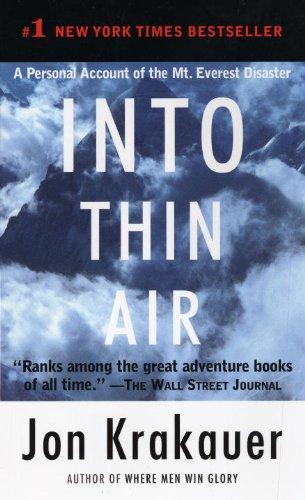
Into Thin Air: A Personal Account of the Mt. Everest Disaster
by
Jon Krakauer
Published 25 Aug 2009
We interpret what we see, select the most workable of the multiple choices. We live entirely, especially if we are writers, by the imposition of a narrative line upon disparate images, by the “ideas” with which we have learned to freeze the shifting phantasmagoria which is our actual experience. Joan Didion The White Album I was already awake at 4:00 A.M. when the alarm on my wrist watch began to beep; I’d been awake most of the night, struggling for breath in the meager air. And now it was time to commence the dreaded ritual of emerging from the warmth of my goose-down cocoon into the withering cold of 21,300 feet.
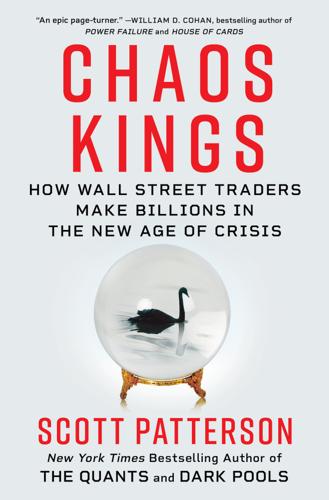
Chaos Kings: How Wall Street Traders Make Billions in the New Age of Crisis
by
Scott Patterson
Published 5 Jun 2023
It was a minor violation of another key concept in the book that Taleb called the Narrative Fallacy. “The angle I take concerns narrativity’s simplification of the world around us and its effects on our perception of the Black Swan and wild uncertainty,” he wrote. The human brain craves order—needs it. As Joan Didion wrote in The White Album, “We tell ourselves stories in order to live…. We live entirely, especially if we are writers, by the imposition of a narrative line upon disparate images.” And so we impose patterns, structures, fragile frameworks onto a world constantly roiled in chaos. “The more you summarize,” Taleb wrote, “the more order you put in, the less randomness.
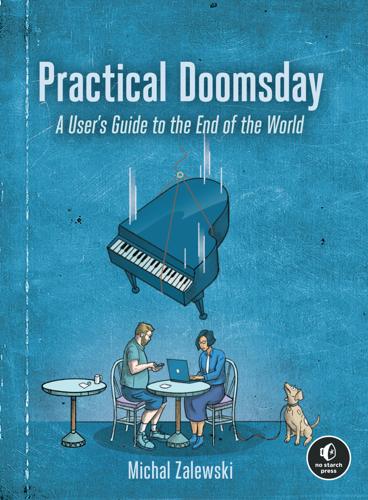
Practical Doomsday: A User's Guide to the End of the World
by
Michal Zalewski
Published 11 Jan 2022
Checklists are the lifeblood of many critical professions; they feature prominently in aviation and in medicine, and they’re common in my own field when responding to data breaches and other computer incidents. If they’re useful for pilots and brain surgeons, they’ll be useful for you too. Another reason to sketch out a plan, to paraphrase noted author Joan Didion, is that writing helps you find out what you think. The concepts in your head can be nebulous and ever shifting, and the mental shortcuts you take may not be obvious until it’s too late. Organizing your thoughts on paper captures a better-defined snapshot that can be refined over time and pressure-tested for flaws.

Golden Gates: Fighting for Housing in America
by
Conor Dougherty
Published 18 Feb 2020
Further, the publisher does not have any control over and does not assume any responsibility for author or third-party websites or their content. Cover design: Darren Haggar Cover image: Getty Images pid_prh_5.5.0_c0_r0 For C4 It is a fresh and continuous robbery, that goes on every day and every hour. —HENRY GEORGE, Progress and Poverty, 1879 The center was not holding. —JOAN DIDION, Slouching Towards Bethlehem, 1968 CONTENTS Title Page Copyright Dedication Epigraph Preface 1. MEMBERS OF THE PUBLIC 2. ORGANIZING THE UNORGANIZABLE 3. NO HAY PEOR LUCHA QUE LA QUE NO SE HACE 4. PLANS OF OPPRESSION 5. SUE THE SUBURBS 6. THE SECOND HOUSING PACKAGE 7.
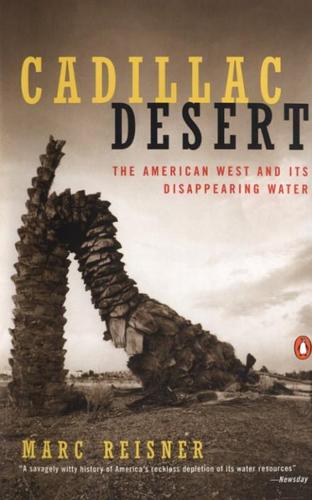
Cadillac Desert
by
Marc Reisner
Published 1 Jan 1986
About a year later, a pair of walloping earthquakes jolted the Mojave Desert, which has become suburban Los Angeles. In the midst of this litany was a hard winter freeze that wiped out a $1.5 billion citrus crop and yet another earthquake, which reduced much of the lovely town of Ferndale, far up on the north coast, to rubble. Joan Didion once described the state as an “amphitheater of natural disaster,” and all these events bore her out—life in California was imitating a heavy metal cartoon. Only none of these was a natural disaster in any true sense. Earthquakes are quite harmless until you decide to put millions of people and two trillion dollars in real estate atop scissile fault zones.
…
Carey McWilliams’s California: The Great Exception is highly recommended for its portrayal of how agribusiness, banking, food processing, the university extension system, cheap imported labor, and publicly subsidized water have created a huge economic juggernaut in the state. It may be the best general book written about California. The best essayist rooting around where California culture and politics meet, in my opinion, is not Joan Didion, but her husband, John Gregory Dunne. His “Eureka! A Celebration of California” is especially fine, though Didion’s more famous essay, “Holy Water,” is not to be missed. A sense of the concentration of agricultural wealth in California can be gained from “Getting Bigger,” by the California Institute for Rural Studies, which profiles the 211 largest farming companies in the state (the smallest of the 211 is a 5,000—acre operation).
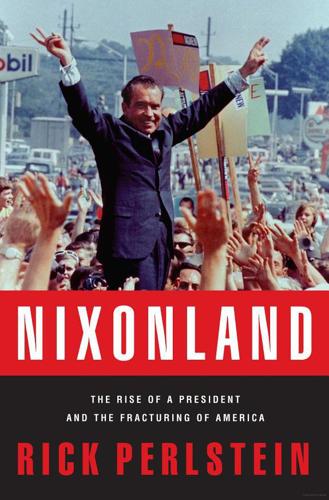
Nixonland: The Rise of a President and the Fracturing of America
by
Rick Perlstein
Published 1 Jan 2008
George Meany on “silent majority”: Jeremy Varon, Bringing the War Home: The Weather Underground, the Red Army Faction, and Revolutionary Violence in the Sixties and Seventies (Berkeley: University of California Press, 2004), 147. Al Capp on “Joanie Phoanie”: “Which One Is the Phoanie?” Time, January 20, 1967. “On January 5, 1967, Vietcong terrorists”: “Who Speaks for the Civilian Dead in South Vietnam?” USNWR, January 16, 1967. Mission: Impossible: TV listings, Time, March 4, 1967. Joan Didion published an essay: Joan Didion, Slouching Toward Bethlehem (New York: Farrar, Straus & Giroux, 1968). The NYPD maintained a twenty-man: William McGowan, “Dan Ran the Hippie Squad,” WSJ, June 17, 2005. The New York Times’s J. Anthony Lukas: “The Two Worlds of Linda Fitzpatrick,” NYT, October 16, 1967; J. Anthony Lukas, Don’t Shoot, We Are Your Children (New York: Random House, 1971), 158–89.
…
Cannon] alters news films in order to depict U.S. soldiers in Viet Nam as murderers, the I.M. Force is sent on a search and destroy mission.”) The notion of the “Summer of Love” as some kind of untroubled idyll became impossible for the media to sustain: too many desperate flower children were addicted to hard drugs, turning tricks to survive. Joan Didion published an essay in the Saturday Evening Post about what she saw when she looked in on Time magazine’s Man of the Year in Haight-Ashbury: catatonics who left toddler children alone to start electrical fires and scolded them only for ruining the hashish. She called her piece “Slouching toward Bethlehem,” after a poem by Yeats: “The blood-dimmed tide is loosed, and everywhere / The ceremony of innocence is drowned.”

Utopia Is Creepy: And Other Provocations
by
Nicholas Carr
Published 5 Sep 2016
During my twenties, a succession of thin volumes of verse—Ted Hughes’s Lupercal, Philip Larkin’s The Whitsun Weddings, Seamus Heaney’s North—were the wedges I used to pry open new ways of seeing and feeling. The list goes on: Hardy’s The Return of the Native, Joyce’s Ulysses, Elizabeth Bishop’s Poems, Cormac McCarthy’s Blood Meridian, Joan Didion’s The White Album, Denis Johnson’s Jesus’ Son. Who would I be without those books? Someone else. PSYCHOLOGISTS AND neurobiologists have begun studying what goes on in our minds as we read literature, and what they’re discovering lends scientific weight to Emerson’s observation. One of the trailblazers in this field is Keith Oatley, a cognitive psychologist at the University of Toronto and the author of several novels, including the acclaimed The Case of Emily V.
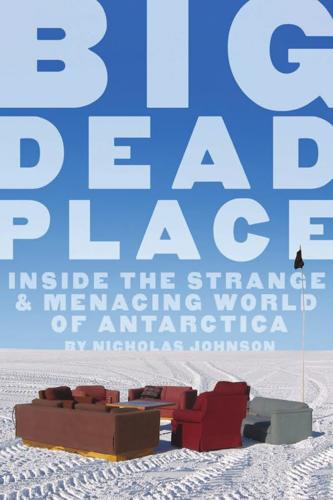
Big Dead Place: Inside the Strange and Menacing World of Antarctica
by
Nicholas Johnson
Published 31 May 2005
It is more professional for a journalist writing a story about the polyethylene weather balloons going up not to ask where they come down.10 And as an adventurer, the journalist’s Antarctica card is bolder, brighter, and more dazzling if his eyes scurry away from the old leaking machines and big screen TVs. Describing American journalists who cover presidential campaigns, Joan Didion wrote: “They are willing, in exchange for ‘access,’ to transmit the images their sources wish transmitted.” Similarly, we read in the paper that science in Antarctica is the end rather than the means, and because of this generous pursuit, everything, very soon, is going to be even better than it is now.11 When the NSF-sponsored journalists step from the plane, Antarctica’s beauty speaks for itself, and the psychedelic vastness hobbles the critical faculties.
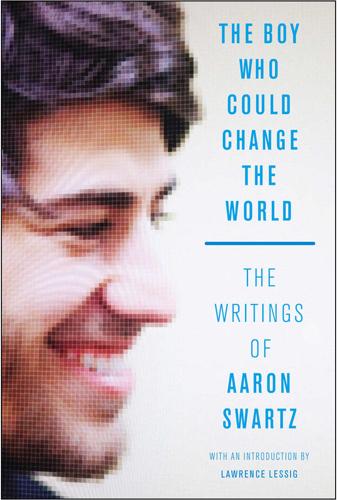
The Boy Who Could Change the World: The Writings of Aaron Swartz
by
Aaron Swartz
and
Lawrence Lessig
Published 5 Jan 2016
This book tells the story of how, after playing professional basketball in Inner Mongolia, he met up with co-founder Mark Ames and started an independent newspaper that danced in the flames of Russia’s dying society. The result is a strange and incredible book: stories of seedy dive bars full of drugged-up loose women, intermixed with incredible feats of investigative journalism into the oligarchs dragging Russia down—without any change in tone. It’s wonderful. Joan Didion, Political Fictions Damn, this book is good. Nobody knows how to take a book and skewer it like Didion. The New York Review of Books pieces reprinted in here are simply some of the best eviscerations of any genre. It’s hard to imagine how people can walk after a review like that. Rick Perlstein, Nixonland Perlstein’s last book, Before the Storm, managed to turn the story of a largely dismissed political figure, Barry Goldwater, into a lesson on how the left can take over the country.
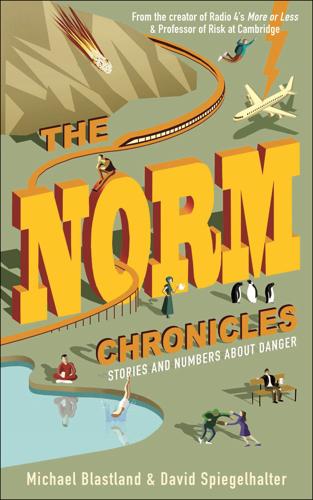
The Norm Chronicles
by
Michael Blastland
Published 14 Oct 2013
I was afraid of swimming pools, high-tension wires, lye under the sink, aspirin in the medicine cabinet, The Broken Man himself. I was afraid of rattlesnakes, riptides, landslides, strangers who appeared at the door, unexplained fevers, elevators without operators and empty hotel corridors. The source of the fear was obvious: it was the harm that could come to her.’ Joan Didion, Blue Nights1 * Assuming it’s all on British roads. The risks on an Afghan pass are probably higher. * Although infant mortality had fallen sharply up to 1921, it still accounted for a staggering 82 babies out of every 1,000 born in 1921. Then it dropped sharply in only a generation, to 46 in 1945.
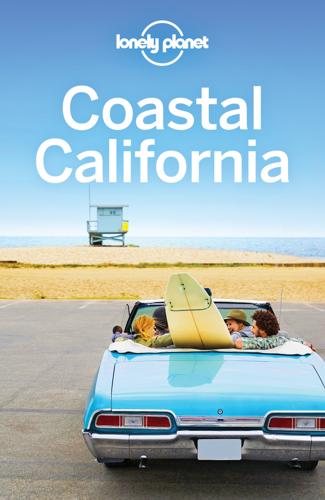
Coastal California Travel Guide
by
Lonely Planet
Meanwhile, the state’s iconic images of tanned surfers and sunny sands endure, never mind thornier real-life questions about how to manage a burgeoning human population and its accompanying challenges of never-ending traffic gridlock, housing shortages and a sky-high cost of living. Best in Print The Tortilla Curtain (TC Boyle; 1995) Mexican-American culture clash and chasing the Californian dream. My California: Journeys by Great Writers (Angel City Press; 2004) Insightful stories by talented chroniclers. Where I Was From (Joan Didion; 2003) California-born essayist shatters palm-fringed fantasies. The Joy Luck Club (Amy Tan; 1989) Tales of Chinese immigrants and their daughters in San Francisco. Hollywood Babylon (Kenneth Anger; 1959) Filmmaker’s not always truthful ‘tell-all’ book about the scandals of Hollywood’s early stars.
…
Censors called Howl obscene, and Ferlinghetti was arrested for publishing it – but he won his trial in a landmark decision for free speech. Beat poets broke style rules and crossed genres, including poet–painter–playwright Kenneth Rexroth and Buddhist philosopher–poet Gary Snyder. But no author has captured California culture with such unflinching clarity as Joan Didion, whose prose burns through the page like sun on a misty California morning. Her collection of literary nonfiction essays Slouching Towards Bethlehem captures 1960s flower power at the exact moment it blooms and wilts. Didion pioneered immersive first-person New Journalism with fellow ’60s California chroniclers Hunter S Thompson (Hells Angels: A Strange and Terrible Saga) and Tom Wolfe (The Electric Kool-Aid Acid Test).

Palo Alto: A History of California, Capitalism, and the World
by
Malcolm Harris
Published 14 Feb 2023
Bell, the Supreme Court ruled that, based on hereditarian science, the state had a compelling interest in sterilizing a Virginia eighteen-year-old named Carrie Buck: She and her mother both scored too low on the Stanford-Binet scale.40 In the first half of the twentieth century, American states sterilized 60,000 women, a third of them in California, and incarcerated more in asylums.41 Writer Joan Didion, who grew up in Sacramento during the period, recalls trips to the local asylum to sing with her Girl Scout troop, along with the institutionalization of her grandmother’s sister, who had come to live with young Joan’s family after the death of her husband. In California, she writes, “the possibility that such a fate could strike at random was the air we breathed.”42 Scaremonger Lewis Terman approved of the state’s harsh mental hygiene regime, suggesting that 1,000 Harvard graduates would produce only 56 descendants in 200 years, while the same number of “degenerate” southern Italians would become 100,000.43 But the high crop values, abundant food for consumption, seasonal labor, strong wages, and privileged positions reserved for white workers meant that European immigrants in Northern California could send their children to school at higher rates and for more years than they could in other parts of the country.
…
Victoria Saker Woeste, The Farmer’s Benevolent Trust: Law and Agricultural Cooperation in Industrial America, 1865–1945 (Chapel Hill: University of North Carolina Press, 2000), 174. 39. Ibid., 182. 40. Nell Irvin Painter, The History of White People (New York: W. W. Norton, 2010), 275. 41. Alexandra Minna Stern, Eugenic Nation: Faults and Frontiers of Better Breeding in Modern America (Oakland: University of California Press, 2016), 84. 42. Joan Didion, Where I Was From (New York: Knopf Doubleday Publishing Group, 2012), 198. 43. Lewis M. Terman, “The Conservation of Talent,” School and Society, March 1924, 363. 44. Matthews, Silicon Valley, Women, and the California Dream, 29; Michael W. McCann and George I. Lovell, Union by Law: Filipino American Labor Activists, Rights Radicalism, and Racial Capitalism (Chicago: University of Chicago Press, 2020), 69. 45.
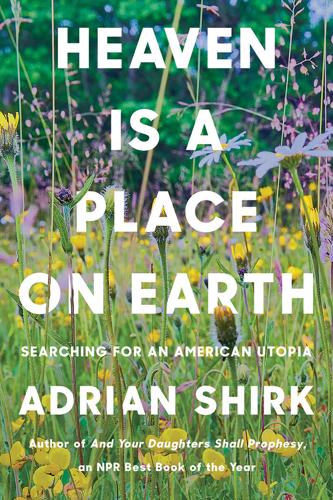
Heaven Is a Place on Earth: Searching for an American Utopia
by
Adrian Shirk
Published 15 Mar 2022
I can’t explain it. It just turns me on.’” It’s creepy—it gives me the creeps, and is the kind of thing that frequently leaves a slimy taste in the mouth regarding the hippies. So many of those communes reinstated the already prescribed hegemony and gender roles existing out in the world. It’s what Joan Didion, as early as 1967, is already jaded about in “Slouching Towards Bethlehem” when she encounters a woman named Barbara in the Haight-Ashbury scene baking a macrobiotic apple pie for her kids and boyfriend, while talking about finding a renewed happiness in “the woman’s thing,” and realizing that “that’s where the trip was,” the woman trip of baking, cleaning, caring, tending.
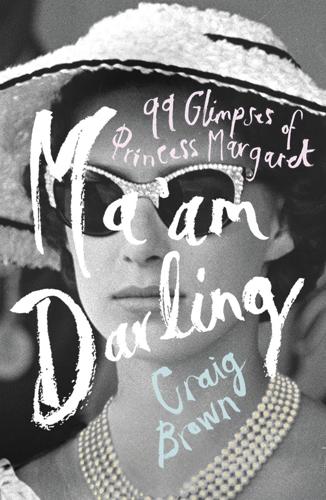
Ma’am Darling
by
Craig Brown
Published 28 Jul 2017
In an effort to cut down on costs, the cash-strapped Tynans had decided on soul food served by a hip, cut-price caterer. When it looked as if the caterer was not going to materialise, Tynan vowed to go to the bathroom and kill himself. Fortunately the caterer arrived in the nick of time, and Tynan was soon back on form greeting his guests, who included Paul Newman and Joanne Woodward, Joan Didion and her husband John Gregory Dunne, Gene Kelly, Sidney Poitier, Ryan and Tatum O’Neal, David Hockney and Neil Simon. The Princess proved even more of a catch in America than in Great Britain. ‘It was quite a sight to see Hollywood royalty scrambling over each other’s backs to get to real royalty,’ noted Tynan’s daughter Tracy.
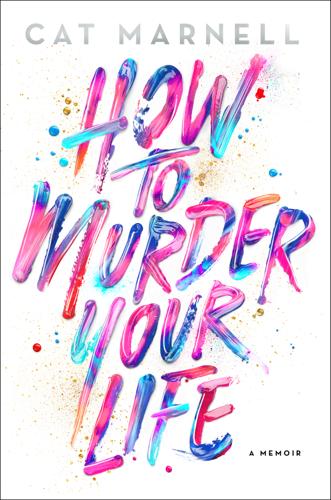
How to Murder Your Life: A Memoir
by
Cat Marnell
Published 30 Jan 2017
• Combine any two lipstick shades and you will get a flattering lipstick shade (FACT: JGJ did not herself wear lipstick). • When writing, never refer to your own body parts—toes, stomach, bikini area—or prisoners will use the imagery you’ve created for their masturbatory fantasies, and you will get letters from them. JGJ lived in a Stanford White house with an honest-to-God monkey pen out back. She liked Joan Didion and World of Interiors and Liberty prints and Rice Krispies Treats and the Mohonk Mountain House and Weleda Skin Food moisturizer; she took classes alongside celebrities like Russell Simmons—she loved Russell Simmons—at Jivamukti Yoga in Union Square twice a week; she hoarded tissue paper and ribbons; Jean was constantly being flown first class to Europe by beauty companies; when in Paris as a guest of Chanel beauté, Sofia Coppola’s nanny Lala cared for JGJ’s kids while she toured Coco’s apartment at 31 rue Cambon (Jean had once deboned a chicken with Sofia Coppola, incidentally).

Northern California Travel Guide
by
Lonely Planet
Ferlinghetti’s City Lights bookstore published many of the generation’s most definitive titles, including Ginsberg’s Howl and Other Poems, which won a landmark 1957 obscenity case during the oppressive era of McCarthyism. Timeless, rare Ansel Adams photographs are paired with excerpts from canonical Californian writers, such as Jack Kerouac and Joan Didion, in California: With Classic California Writings, edited by Andrea Gray Stillman. Modern Mythmakers More recently, a number of Northern California authors have enjoyed attention on the international stage. Chinese American novelist Amy Tan’s Joy Luck Club was a celebrated work about the dynamics of families in San Francisco’s Chinatown.
…
Writer, editor and publisher Dave Eggers was a Pulitzer Prize finalist for his 2000 memoir A Heartbreaking Work of Staggering Genius, and two literary ventures have earned national attention: a literary magazine The Believer and a nonprofit literary advocacy program, 826 Valencia, which is named for its Mission District address. Some of the most eloquent modern writing on Northern California, the Summer of Love, the Central Valley and the California political circus is by the hand of Sacramento native essayist Joan Didion. Didion’s White Album is a collection of essays that goes deep into the psyche of California in the late '60s, and discussion of the Central Valley in Where I Was From takes a thoughtful look at Ronald Reagan’s governor mansion, water wars and the odysseys of California’s mythmakers. The Land & Wildlife Northern California has stunning landscapes.
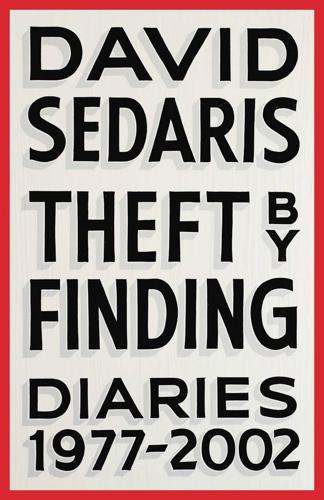
Theft by Finding: Diaries (1977-2002)
by
David Sedaris
Published 29 May 2017
I can point them out too, of course, but I’m not the student, and I worry that in defending myself I’ll sound too desperate. September 6, 1988 Chicago Tomorrow is the cocktail party for faculty, and today I found a $5 bill on the street. I’m thinking I’ll spend it on magazines. One thing I’ll buy is this week’s New Yorker, which has a Joan Didion “Letter from Los Angeles” in it. September 8, 1988 Chicago Last month, Evelyne’s electric bill was $345. Kim’s was $109. Shirley’s was $280. Mine was $35. September 9, 1988 Chicago I came upon two evangelists on State Street this morning, both conservatively dressed white women in their late thirties.
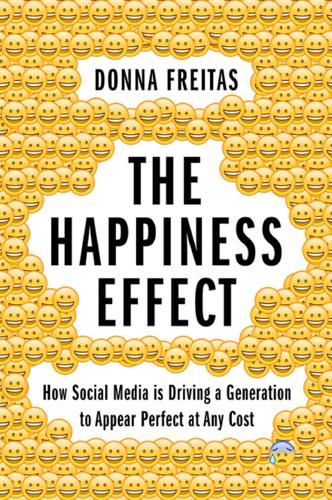
The Happiness Effect: How Social Media Is Driving a Generation to Appear Perfect at Any Cost
by
Donna Freitas
Published 13 Jan 2017
Jason, junior, public university TRYING SO HARD TO FORGET OURSELVES In a seminar on memoir that I taught at Hofstra University’s Honors College, my five intellectually gifted and academically driven students contemplated falling madly in love while reading Patti Smith’s Just Kids, what it’s like to be young and Muslim via Eboo Patel’s Acts of Faith, and the trials of grief in Joan Didion’s Year of Magical Thinking. But there was something about memoir itself, about sitting down to contemplate life’s meaning and purpose, that caused my students to question absolutely everything: their majors, their career paths, their backgrounds, the pursuit of true love. It pulled them up and out of their comfort zones and had them pouring out their deepest feelings.
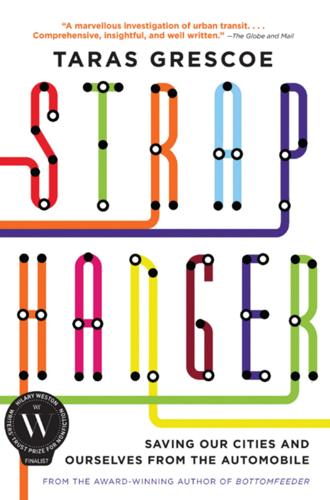
Straphanger
by
Taras Grescoe
Published 8 Sep 2011
You sense the power of the myth when Randy Newman comes on the car radio, rhyming off the freeways in “I Love L.A.” as he cruises Santa Monica Boulevard with a nasty redhead in an open-top Buick. Or when you pass the space-age sign of an In-N-Out Burger and dig the Googie architecture on Sunset that looks so good at 40 miles an hour (and like so much cheap plaster when you get up close). Or when you come across Joan Didion rhapsodizing in The White Album: “The freeway experience is the only secular communion Los Angeles has…. Actual participants think only about where they are. Actual participation requires a total surrender, a concentration so intense as to seem a kind of narcosis, a rapture-of-the-freeway.” Driving Los Angeles’s roads can still be a rapturous experience—provided you do it at three in the morning.
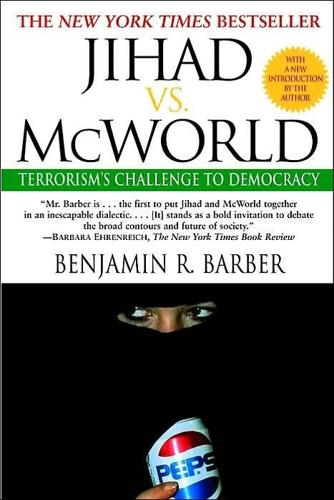
Jihad vs. McWorld: Terrorism's Challenge to Democracy
by
Benjamin Barber
Published 20 Apr 2010
Margaret Crawford, an astute student of mall culture, has noticed that the express aim of the developers is to contain the entire world within the shopping plaza. She cites one of the builders of the world’s largest mall, who at the opening ceremony boasted: “What we have done means you don’t have to go to New York or Paris or Disneyland or Hawaii. WE have it all here for you in one place, in Edmonton, Alberta, Canada!”27 Joan Didion has suggested that malls are actually addictive, a space where “one moves for a while in an aqueous suspension, not only of light, but of judgment, not only of judgment, but of personality.”28 The boundaries that separate the mall from the world are intended to remove every boundary between what goes on inside the mall and in the world: very few exits, no clocks.

Goddess of the Market: Ayn Rand and the American Right
by
Jennifer Burns
Published 18 Oct 2009
Members of Frank O’Connor’s extended family claimed that Rand herself had an abortion in the early 1930s, which they helped pay for. Heller, 128. Rand never mentioned this incident, but whatever her personal experience, her support of abortion rights was fully consonant with her emphasis on individualism and personal liberty. 50. Joan Didion made a nearly identical argument in “The Women’s Movement,” in The White Album (New York: Simon and Schuster, 1979), 110. Many feminists did indeed have Marxist roots. See Daniel Horowitz, Betty Friedan and the Making of the Feminine Mystique: The American Left, the Cold War, and Modern Feminism (Amherst: University of Massachusetts Press, 1998). 51.
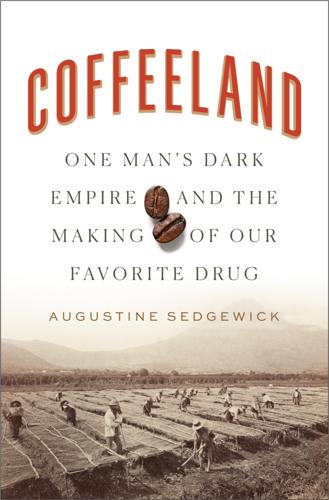
Coffeeland: One Man's Dark Empire and the Making of Our Favorite Drug
by
Augustine Sedgewick
Published 6 Apr 2020
Finley to the Secretary of State, September 30, 1931, RG 84, Diplomatic Posts: El Salvador, vol. 114, NARA CP. 9. Samper and Fernando, “Historical Statistics,” 452. 10. W. J. McCafferty to the Secretary of State, January 16, 1932, RG 84, El Salvador, vol. 116, NARA CP. 11. See, among other sources, Joan Didion, Salvador (New York: Simon & Schuster, 1983; reprint, Vintage, 1994), 54; Robert Armstrong and Janet Shenk, El Salvador: Face of Revolution (Boston: South End Press, 1982), 26. 12. Kenneth J. Grieb, “The United States and the Rise of General Maximiliano Hernández Martínez,” Journal of Latin American Studies 3, no. 2 (November 1971): 151. 13.

Evil Geniuses: The Unmaking of America: A Recent History
by
Kurt Andersen
Published 14 Sep 2020
It was the same in the United States then as it is in Scandinavian countries today, the share of the nation’s wealth owned by nonwealthy Americans larger than it had been since measurements began. The system was working pretty well, and the national consensus about fairness endured. People took for granted all the progress we’d achieved. It really seemed irreversible. *1 Norman Mailer was a bit older, thirty-six as the decade began, but Tom Wolfe turned thirty in 1960, Joan Didion in 1964, and Hunter Thompson in 1967. *2 Which is why starting in the 1970s, for instance, the humorist and illustrator Bruce McCall could have a career painting panoramas of fantastical flying machines and infrastructure for the National Lampoon and then The New Yorker, grand futures as if depicted by overoptimists of the past, what he called “retro-futurism
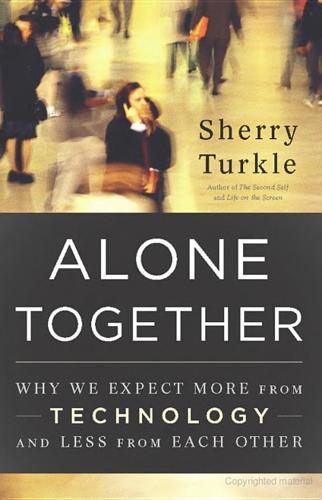
Alone Together
by
Sherry Turkle
Published 11 Jan 2011
Second, online links that are there to be double-clicked are determined by what the author of the text thinks it is important for you to be exposed to. Third, even if one accepts that such links are convenient, they are easily bypassed when reading is interrupted by an incoming e-mail or other online distractions. 3 In The Year of Magical Thinking (New York: Alfred A. Knopf, 2005), a memoir about the year after her husband’s death, Joan Didion describes how material objects became charged with meaning. So, for example, Didion cannot bring herself to throw away her husband’s shoes because she is convinced that he may need them. This same magical thinking is associated both with religious devotion and the “illness” of mourning. With time, Freud believed, the true object, the lost husband, comes to have a full internal representation.
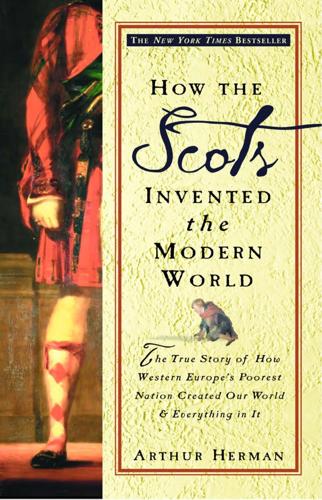
How the Scots Invented the Modern World: The True Story of How Western Europe's Poorest Nation Created Our World and Everything in It
by
Arthur Herman
Published 27 Nov 2001
On Thomas Macaulay, one book does the job: John Clive’s Macaulay: The Shaping of the Historian (New York, 1973). Macaulay’s two most important parliamentary orations can be found in various collections of his essays, since these were once considered indispensable models of English prose. Today we have no need of Macaulay, since we have Joan Didion, or perhaps P. J. O’Rourke, so these collections are hard to find in print; but it is still possible to spring one loose from a used bookstore or public library. CHAPTER ELEVEN: THE LAST MINSTREL— SIR WALTER SCOTT AND THE HIGHLAND REVIVAL Why is there is no full-length literary biography of Sir Walter Scott, apart from Edgar Johnson’s Sir Walter Scott: The Great Unknown, two volumes (London, 1970), which is now more than thirty years old?
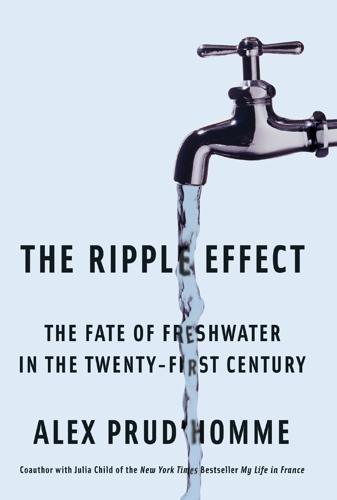
The Ripple Effect: The Fate of Fresh Water in the Twenty-First Century
by
Alex Prud'Homme
Published 6 Jun 2011
CHAPTER 13 Revenue Streams As it happens my own reverence for water has always taken the form of this constant meditation upon where water is, of an obsessive interest not in the politics of water but in the waterworks themselves, in the movement of water through aqueducts and siphons and pumps and forebays and afterbays and weirs and drains, in plumbing on the grand scale. —Joan Didion, “Holy Water,” The White Album THE JOYS AND SORROWS OF CONVEYANCE In America, the West refers to those states west of the hundredth meridian of longitude. Heading south from the Canadian border, the hundredth meridian cuts through North Dakota, South Dakota, Nebraska, Kansas, Oklahoma, and Texas.
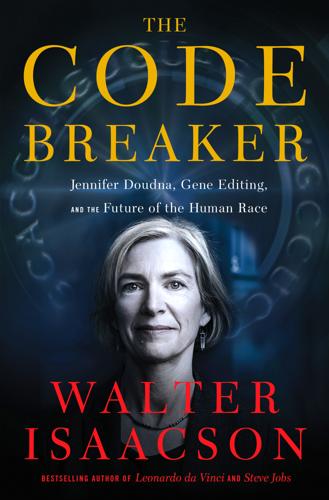
The Code Breaker: Jennifer Doudna, Gene Editing, and the Future of the Human Race
by
Walter Isaacson
Published 9 Mar 2021
James Watson’s The Double Helix Doudna’s father was a voracious reader who would check out a stack of books from the local library each Saturday and finish them by the following weekend. His favorite writers were Emerson and Thoreau, but as Jennifer was growing up he became more aware that the books he assigned to his class were mostly by men. So he added Doris Lessing, Anne Tyler, and Joan Didion to his syllabus. Often he would bring home a book, either from the library or the local secondhand bookstore, for her to read. And that is how a used paperback copy of James Watson’s The Double Helix ended up on her bed one day when she was in sixth grade, waiting for her when she got home from school.
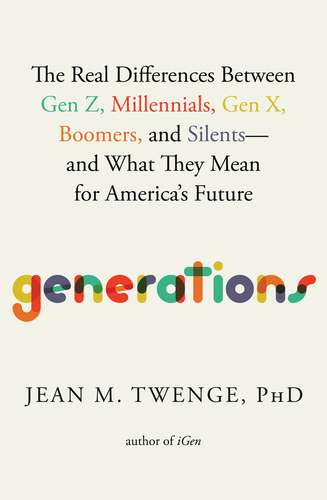
Generations: The Real Differences Between Gen Z, Millennials, Gen X, Boomers, and Silents—and What They Mean for America's Future
by
Jean M. Twenge
Published 25 Apr 2023
Kennedy (1925) Cesar Chavez (1927) Walter Mondale (1928) Martin Luther King Jr. (1929) Sandra Day O’Connor (1930) Ted Kennedy (1932) Diane Feinstein (1933) Ruth Bader Ginsburg (1933) Gloria Steinem (1934) Ralph Nader (1934) Geraldine Ferraro (1935) John McCain (1936) Antonin Scalia (1936) Madeleine Albright (1937) Colin Powell (1937) Nancy Pelosi (1940) Dick Cheney (1941) Jesse Jackson (1941) Bernie Sanders (1941) Joe Biden (1942) Mitch McConnell (1942) John Kerry (1943) Angela Davis (1944) Athletes and Sports Figures Arnold Palmer (1929) Mickey Mantle (1931) Roberto Clemente (1934) Wilt Chamberlain (1936) Jack Nicklaus (1940) Muhammad Ali (1942) Arthur Ashe (1943) Joe Namath (1943) Billie Jean King (1943) Journalists, Authors, and People in the News Harper Lee (1926) Hugh Hefner (1926) Erma Bombeck (1927) Maya Angelou (1928) Barbara Walters (1929) Neil Armstrong (1930) Tom Wolfe (1930) Toni Morrison (1931) Dan Rather (1931) Susan Sontag (1933) Philip Roth (1933) Joan Didion (1934) Charles Kuralt (1934) Carl Sagan (1934) Phil Donahue (1935) Ken Kesey (1935) Judy Blume (1938) Peter Jennings (1938) Joyce Carol Oates (1938) Jerry Rubin (1938) Jacqueline Kennedy Onassis (1939) Tom Brokaw (1940) Anthony Fauci (1940) Sue Grafton (1940) Ted Koppel (1940) Ed Bradley (1941) Nora Ephron (1941) Martha Stewart (1941) Michael Crichton (1942) Erica Jong (1942) John Irving (1942) Bob Woodward (1943) Carl Bernstein (1944) The Equality Revolution Trait: Pioneers in Civil Rights Imagine hopping into a time machine and stopping at two different times, just seven years apart: 1963 and 1970.

Aerotropolis
by
John D. Kasarda
and
Greg Lindsay
Published 2 Jan 2009
Richard Branson’s commitment to devote his transportation businesses’s profits to biofuel research was made at the Clinton Global Initiative conference in September 2006. 1: A Tale of Three Cities The early history of Los Angeles International Airport and its first incarnation as Mines Field was drawn from notes taken during a trip to the airport’s Flight Path Learning Center, which has kept Ford A. Carpenter’s original field notes and report to the Chamber of Commerce, along with plans for the LAX II at Palmdale that never was. The origins of the Warfare State are succinctly told by Manuel Castells and Peter Hall in Technopoles of the World. I also found inspiration in Joan Didion’s account of Lakewood’s creation in Where I Was From. Aerospace’s impact on Silicon Valley was measured by the economist Kenneth Flamm in Creating the Computer. Carey McWilliams mentioned the overnight invention of Westchester in California. The smiley curve was added to the lexicon by James Fallows in “China Makes, the World Takes” (The Atlantic, July/August 2007).
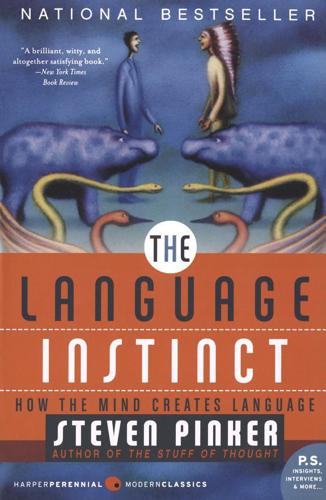
The Language Instinct: How the Mind Creates Language
by
Steven Pinker
Published 1 Jan 1994
Samuel Taylor Coleridge wrote that visual images of scenes and words once appeared involuntarily before him in a dreamlike state (perhaps opiuminduced). He managed to copy the first forty lines onto paper, resulting in the poem we know as “Kubla Khan,” before a knock on the door shattered the images and obliterated forever what would have been the rest of the poem. Many contemporary novelists, like Joan Didion, report that their acts of creation begin not with any notion of a character or a plot but with vivid mental pictures that dictate their choice of words. The modern sculptor James Surls plans his projects lying on a couch listening to music; he manipulates the sculptures in his mind’s eye, he says, putting an arm on, taking an arm off, watching the images roll and tumble.

Central America
by
Carolyn McCarthy
,
Greg Benchwick
,
Joshua Samuel Brown
,
Alex Egerton
,
Matthew Firestone
,
Kevin Raub
,
Tom Spurling
and
Lucas Vidgen
Published 2 Jan 2001
Several beaches west of here also have excellent waves and all-service surf lodges. Your best bets for lessons are at Esencia Nativa in Playa El Zonte Click here, or a number of places in Playa El Tunco Click here. Peak season is March to December. BOOKS Major Salvadoran authors (Click here) are available in translation. Joan Didion’s Salvador is a moving account of the early days of the war. Nonfiction about the civil war includes Massacre at El Mozote by Mark Danner, Witness to War: An American Doctor in El Salvador by Charles Clements MD, and Rebel Radio, a fascinating, firsthand account of clandestine radio stations operated by FMLN guerrillas.
…
These volumes provided the world with the first glimpses of the Maya cities and are still regarded as a good, popular overview. Guatemala: Eternal Spring — Eternal Tyranny by Jean-Marie Simon uses first-hand accounts and more than 130 photographs in a moving, harrowing documentation of human-rights abuses during the civil war. Other interesting portraits include Salvador by Joan Didion, a moving account of the early days of El Salvador’s civil war. Gioconda Belli’s The Country Under My Skin: A Memoir of Love and War profiles Nicaragua. The Darkest Jungle by Todd Balf chronicles the US Army’s disastrous 1854 Darién expedition in Panama. Costa Rica: A Traveler’s Literary Companion (edited by Barbara Ras) is a compilation of short stories by modern Costa Rican writers.
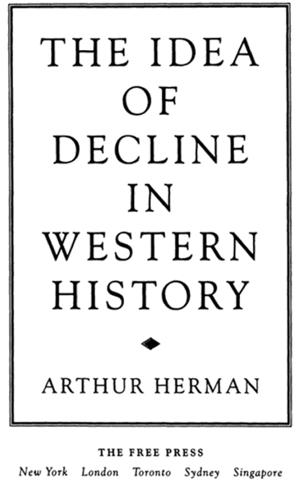
The Idea of Decline in Western History
by
Arthur Herman
Published 8 Jan 1997
For every Western intellectual who dreads the collapse of his own society (like Henry Adams or Arnold Toynbee or Paul Kennedy or Charles Murray), there is another who has looked forward to that event with glee. For the better part of three decades, America’s preeminent thinkers and critics—from Norman Mailer, Gore Vidal, Thomas Pynchon, Christopher Lasch, Jonathan Kozol, and Garry Wills to Joseph Campbell, Joan Didion, Susan Sontag, Jonathan Schell, Robert Heilbroner, Richard Sennett, Noam Chomsky, Paul Goodman, Michael Harrington, E.L. Doctorow, and Kirkpatrick Sale, not to mention Cornel West, Albert Gore, and the Unabomber—have advanced a picture of American society far more frightening than anything pessimists like Charles Murray or Kevin Phillips could come up with.
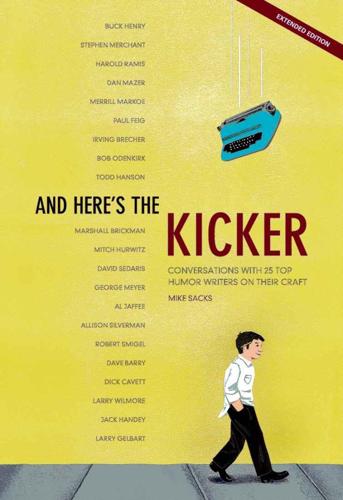
And Here's the Kicker: Conversations with 21 Top Humor Writers on Their Craft
by
Mike Sacks
Published 8 Jul 2009
Yes, it can be argued that this is the character's view of the world, but I thought it was dangerous — the line between who Woody was in life and the characters he was playing in his movies was pretty fuzzy. And I said, “The critics are going to kill us! It's a pretentious, narcissistic, solipsistic view of the world that you're offering up.” And he said, “Nah, you're crazy, nobody's going to say anything, it's going to be fine.” And he was right. The only person who criticized us was Joan Didion in The New York Review of Books. She said something to the effect of: “Who in the hell do they think they are with their things worth living for?” I've always felt that that particular speech was essential to the broader theme of the movie — that an obsession with minutiae takes our minds off the bigger issues.

Frommer's Los Angeles 2010
by
Matthew Richard Poole
Published 28 Sep 2009
Martin’s Griffin, 1997), 192 pages of murder sites, sex shops, curiosity shops, dive bars, and v arious other S outhern California scurrility. FICTION Since the book is almost always better than the mo vie, try a fe w of these no vels that hav e been adapted into successful films: J ames Ellroy’s epic crime novel L.A. Confidential (Mysterious Press, 1990), Joan Didion’s profoundly disturbing Play I t as I t Lays (F arrar, S traus and Giroux, 1990), J oseph Wambaugh’s gripping LAPD chronicles such as The Onion Field (Dell, 1974), John Gregory Dunne’s cynical and har d-boiled True Confessions (Bookthrift Co., 1977), Elmore Leonard’s Hollywood-based bestseller Get S horty (HarperTorch, 2002), and M ichael Tolkin’s absorbing mystery/thriller The Player (Grove Press, 1997).
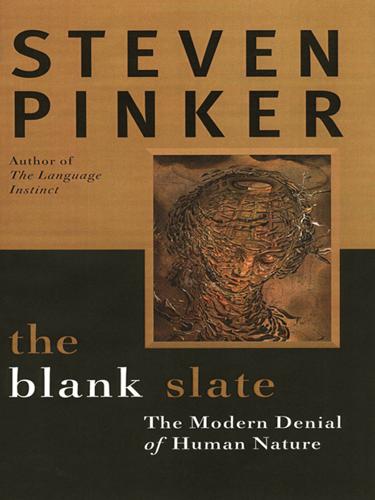
The Blank Slate: The Modern Denial of Human Nature
by
Steven Pinker
Published 1 Jan 2002
Gender feminism’s disdain for analytical rigor and classical liberal principles has recently been excoriated by equity feminists, among them Jean Bethke Elshtain, Elizabeth Fox-Genovese, Wendy Kaminer, Noretta Koertge, Donna Laframboise, Mary Lefkowitz, Wendy McElroy, Camille Paglia, Daphne Patai, Virginia Postrel, Alice Rossi, Sally Satel, Christina Hoff Sommers, Nadine Strossen, Joan Kennedy Taylor, and Cathy Young.16 Well before them, prominent women writers demurred from gender-feminist ideology, including Joan Didion, Doris Lessing, Iris Murdoch, Cynthia Ozick, and Susan Sontag.17 And ominously for the movement, a younger generation has rejected the gender feminists’ claims that love, beauty, flirtation, erotica, art, and heterosexuality are pernicious social constructs. The title of the book The New Victorians: A Young Woman’s Challenge to the Old Feminist Order captures the revolt of such writers as Rene Denfeld, Karen Lehrman, Katie Roiphe, and Rebecca Walker, and of the movements called Third Wave, Riot Grrrl Movement, Pro-Sex Feminism, Lipstick Lesbians, Girl Power, and Feminists for Free Expression.18 The difference between gender feminism and equity feminism accounts for the oft-reported paradox that most women do not consider themselves feminists (about 70 percent in 1997, up from about 60 percent a decade before), yet they agree with every major feminist position.19 The explanation is simple: the word “feminist” is often associated with gender feminism, but the positions in the polls are those of equity feminism.
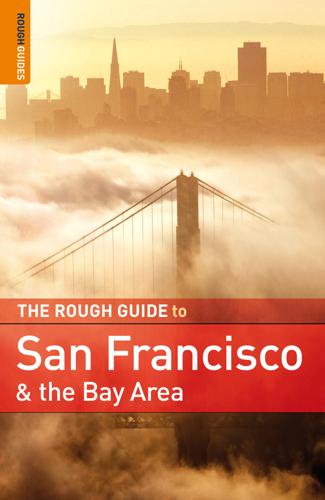
Rough Guide to San Francisco and the Bay Area
by
Nick Edwards
and
Mark Ellwood
Published 2 Jan 2009
Gamson uses an early disco diva, the flamingly gay Sylvester, as an entry point into the “Anything Goes” San Francisco of the 1970s. Sylvester’s story is compelling Dan Kurtzman Disaster!. Hour-by-hour account of the Great Fire of 1906, crisply told as a gripping narrative focusing on the fate of a handful of local residents. | Books Joan Didion Slouching Toward Bethlehem. Selected essays from one of California’s most renowned journalists, taking a critical look at the West Coast of the 1960s, including San Francisco’s acid culture. In a similar style, The White Album traces the West Coast characters and events that shaped the 1960s and 1970s, including The Doors, Charles Manson, and the Black Panthers.

Enlightenment Now: The Case for Reason, Science, Humanism, and Progress
by
Steven Pinker
Published 13 Feb 2018
Snow never assigned an order to his Two Cultures, but subsequent usage has numbered them in that way; see, for example, Brockman 2003. 13. Snow 1959/1998, p. 14. 14. Leavis flame: Leavis 1962/2013; see Collini 1998, 2013. 15. Leavis 1962/2013, p. 71. CHAPTER 4: PROGRESSOPHOBIA 1. Herman 1997, p. 7, also cites Joseph Campbell, Noam Chomsky, Joan Didion, E. L. Doctorow, Paul Goodman, Michael Harrington, Robert Heilbroner, Jonathan Kozol, Christopher Lasch, Norman Mailer, Thomas Pynchon, Kirkpatrick Sale, Jonathan Schell, Richard Sennett, Susan Sontag, Gore Vidal, and Garry Wills. 2. Nisbet 1980/2009, p. 317. 3. The Optimism Gap: McNaughton-Cassill & Smith 2002; Nagdy & Roser 2016b; Veenhoven 2010; Whitman 1998. 4.
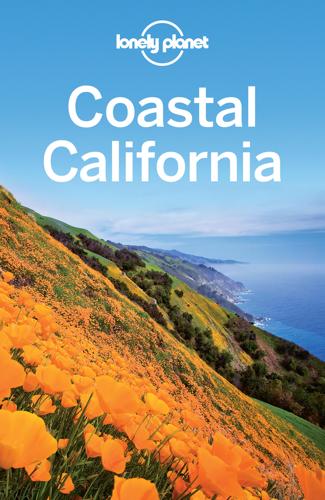
Coastal California
by
Lonely Planet
You’ve probably already read books by Californians without knowing it, for example, Ray Bradbury’s 1950s dystopian classic Fahrenheit 451; Alice Walker’s Pulitzer Prize–winning The Color Purple ; Ken Kesey’s quintessential ’60s novel One Flew Over the Cuckoo ’ s Nest ; UC Berkeley professor Maxine Hong Kingston’s The Woman Warrior ; Michael Chabon’s Pulitzer Prize-winning The Amazing Adventures of Kavalier and Clay ; or Dave Eggers, the Bay area hipster behind McSweeney’s quarterly literary journal. Few writers nail California culture as well as Joan Didion. She’s best known for her collection of essays, Slouching Towards Bethlehem, which takes a caustic look at 1960s flower power and Haight-Ashbury. Tom Wolfe also put ’60s San Francisco in perspective with The Electric Kool-Aid Acid Test, which follows Ken Kesey’s band of Merry Pranksters, who began their acid-laced ‘magic bus’ journey near Santa Cruz.

Western USA
by
Lonely Planet
Ropers and wranglers have waxed lyrical here for more than 25 years. After the chaos of WWII, the Beat Generation brought about a provocative new style of writing: short, sharp, spontaneous and alive. Based in San Francisco, the scene revolved around Jack Kerouac (On the Road), Allen Ginsberg (Howl) and Lawrence Ferlinghetti, the Beats’ patron and publisher. Joan Didion nailed contemporary California culture in Slouching Towards Bethlehem, a collection of essays that takes a caustic look at 1960s flower power and the Haight-Ashbury district. Tom Wolfe also put ’60s San Francisco in perspective with The Electric Kool-Aid Acid Test, which follows Ken Kesey’s band of Merry Pranksters.
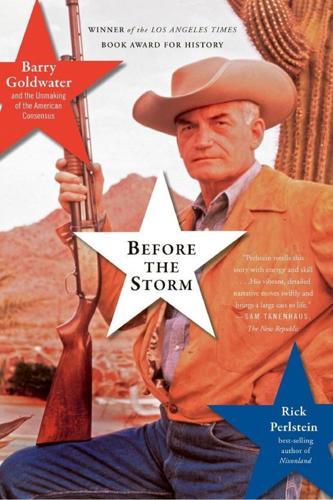
Before the Storm: Barry Goldwater and the Unmaking of the American Consensus
by
Rick Perlstein
Published 17 Mar 2009
“We are an opposition,” wrote NR chief theoretician Frank Meyer, “and we have to fight conformity.” Arch wit and stylistic daring were revered in the cramped offices on East 37th Street. Garry Wills, a young Midwestern seminarian brought on board as drama critic on the strength of one unsolicited manuscript, and two of the most influential critical stylists of the 196os, John Leonard and Joan Didion, got their start in the the magazine’s culture pages. But culture was the undercard. The main event was exposing the Liberals (the word was always capitalized, sticking out like an unlovely anomaly in the march of Western Civilization) as an unaccountable establishment—a mission formalized, in early issues, by eleven separate columns, each devoted to monitoring a single redoubt: the intelligentsia (Willmoore Kendall on “The Liberal Line”), foreign policy (James Burnham on “The Third Cold War”), newspapers (Karl Hess on “The Press of Freedom”), and on and on.
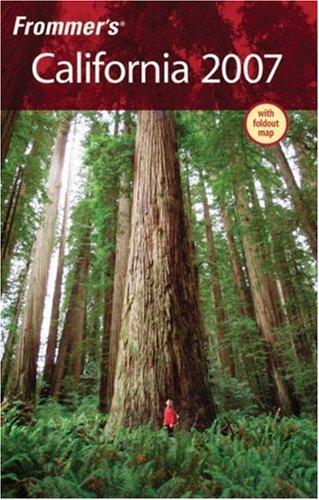
Frommer's California 2007
by
Harry Basch
,
Mark Hiss
,
Erika Lenkert
and
Matthew Richard Poole
Published 6 Dec 2006
Finally, for what some critics consider the best novel ever written about Hollywood, turn to Nathanael West’s The Day of the Locust, a savage and satirical look at life on the fringes of the film industry in the 1930s. 49 tale of love and greed set at the turn of the 20th century, and Dashiell Hammett’s The Maltese Falcon, a detective novel that captures the seedier side of San Francisco in the 1920s. Another favorite is Raymond Chandler’s The Big Sleep, in which Philip Marlowe explores the darker side of Los Angeles in the 1930s. California has always been a hotbed for alternative—and, more often than not, controversial—literary styles. Joan Didion, in her novel Slouching Towards Bethlehem, and Hunter S. Thompson, in his columns for the San Francisco Examiner (brought together in the collection Generation of Swine), both used a “new journalistic” approach in their studies of San Francisco in the 1960s. Tom Wolfe’s early work The Electric Kool-Aid Acid Test follows the Hell’s Angels, the Grateful Dead, and Ken Kesey’s Merry Pranksters as they ride through the hallucinogenic 1960s.
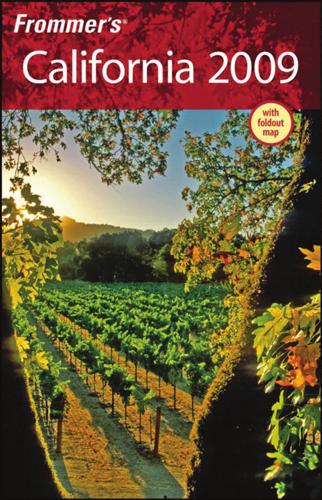
Frommer's California 2009
by
Matthew Poole
,
Harry Basch
,
Mark Hiss
and
Erika Lenkert
Published 2 Jan 2009
Mystery & Mayhem For all y ou mystery buffs headed to California, two must-reads include Frank Norris’s McTeague: A S tory of S an Francisco, a violent tale of lo ve and gr eed set in turnof-the-20th-century S an F rancisco, and Dashiell Hammett’s The Maltese Falcon, a steamy detectiv e no vel that captur es the seedier side of San Francisco in the 1920s. Another fav orite is Raymond Chandler ’s The B ig S leep, wher e priv ate dick P hilip Marlowe plies the seedier side of Los Angeles in the 1930s. California has always been a hotbed for alternative—and, mor e often than not, controversial—literary styles. Joan Didion, in her no vel Slouching Toward Bethlehem, and Hunter S. Thompson, in his columns for the San F rancisco E xaminer (br ought together in the collection Generation of Swine), both used a “ new journalistic ” approach in their studies of 1960s S an Francisco. Tom Wolfe’s early wor k, The Electric K ool-Aid A cid Test, follows the Hell’s Angels, the Grateful Dead, and Ken Kesey’s M erry P ranksters as they ride through that hallucinogenic decade.